
- Privacy Policy
- Galapagos Islands
- Philippines
- Africa Overland
- New Zealand
- Solo Travel
- Backpacking

USA , Itineraries , Road Trips
Utah’s national parks: ultimate 5-day road trip from vegas.
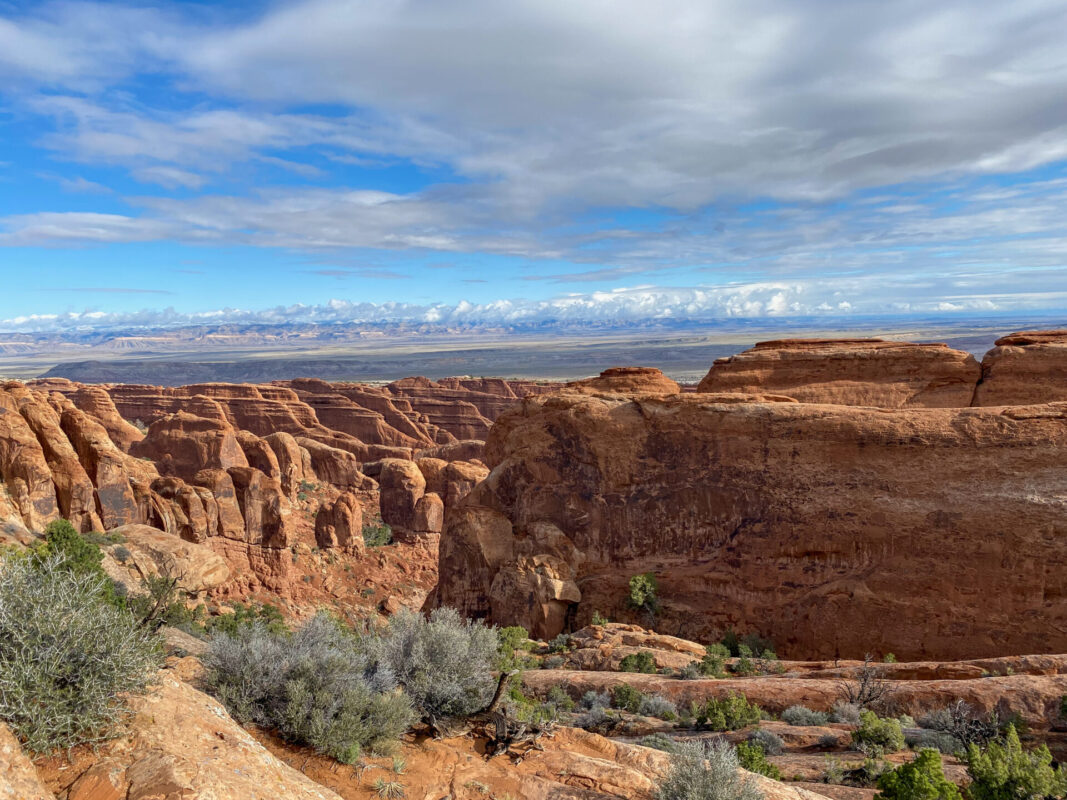
Table of Contents
Planning a road trip through Utah’s National Parks? I’m here to help! This is one of my favourite road trips I’ve ever done. The diversity of Utah’s scenery and landscapes is breathtaking. It almost feels like being transported to another planet.
Utah is like nowhere else on Earth. With its magnificent red landscape and unusual rock formations, Utah is home to some of the most unique national parks in the United States. It’s the perfect place for a road trip.
In this post, I’ve shared a 5-day itinerary through Utah’s National Parks which starts and ends in Las Vegas. The itinerary takes you through Utah’s epic ‘Mighty 5’ – the five National Parks of Utah. It’s a jam-packed itinerary to say the least but an epic one at that.
I’ve also suggested additional spots for those who have more time on their road trip, including destinations a little further afield. The itinerary can also be adjusted to start in Las Vegas and end in Salt Lake City .
There are a couple of long drives in this itinerary, but I promise it’s worth it!
Make sure you’re prepared for your trip and know what to pack for your journey through Utah .
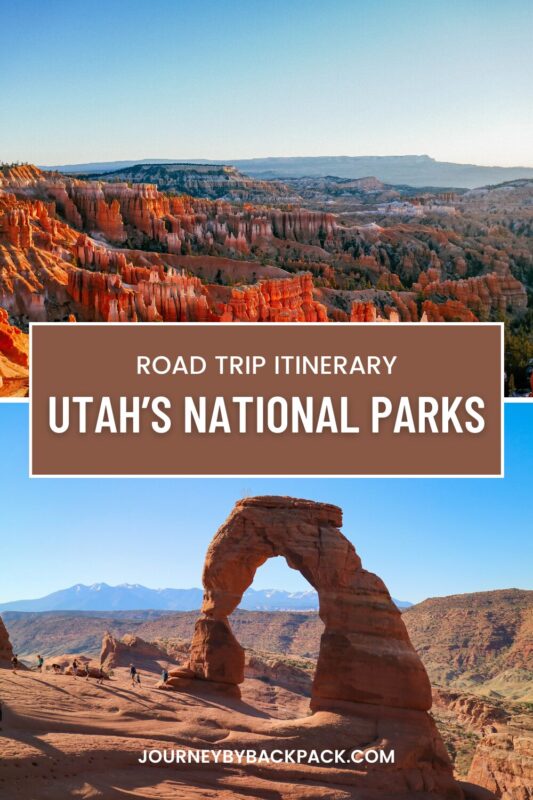
Here’s my 5-day Utah National Parks itinerary from Las Vegas.
When is the best time of year to visit Utah’s National Parks?
Utah’s National Parks are mostly accessible all year round. Having said that, different seasons have their advantages.
Spring and fall are the best times of year to visit Utah. There are fewer crowds and the temperatures aren’t too extreme. You’ll also likely find it’s cheaper to travel in Utah during the spring and fall. I’d recommend the months of April & May and September & October .
It’s worth noting there might be some snowfall during the spring or fall. This could affect hiking trails and roads. I visited Utah in October and there was snow in Bryce Canyon. We could still do all the hikes, but it was slippery to say the least. Oh, and the camping was freezing!
The summer is a popular time to visit and is the peak season in Utah. School is out and families are looking to vacation in the national parks. If you can, I’d avoid the months of July and August . Utah’s National Parks will be crowded and the temperatures have the potential to be too hot to hike.
It’s also possible to visit Utah in the winter. The national parks will be at their quietest between November and March . This may not be the best time to visit if you plan to hike. Utah can see a lot of snowfall and ice meaning the hiking trails are prone to closure in these months. That’s not to say a winter road trip through Utah isn’t possible.
Next up, here’s what to pack for a road trip through Utah .
Utah’s National Parks – The Mighty 5
The five national parks of Utah are known as The Mighty 5. If you’re planning a road trip through Utah, visiting each of the Mighty 5 is the best way to see the true diversity of the Utah landscape.
I’ve shared a brief overview of each of Utah’s Mighty 5 below.
Zion National Park
Zion National Park is one of the most famous national parks in all of the United States. It’s a stunning spectacle of towering sandstone cliffs, narrow slot canyons and lush forested valleys.
Zion is known for several iconic hikes. This includes the notorious Angels Landing, one of the most dangerous hikes in the USA . Another popular hike in Zion is ‘the Narrows’. This renowned track leads hikers between sheer slot canyon walls through the Virgin River. It’s an absolute must-do hike while in Utah.
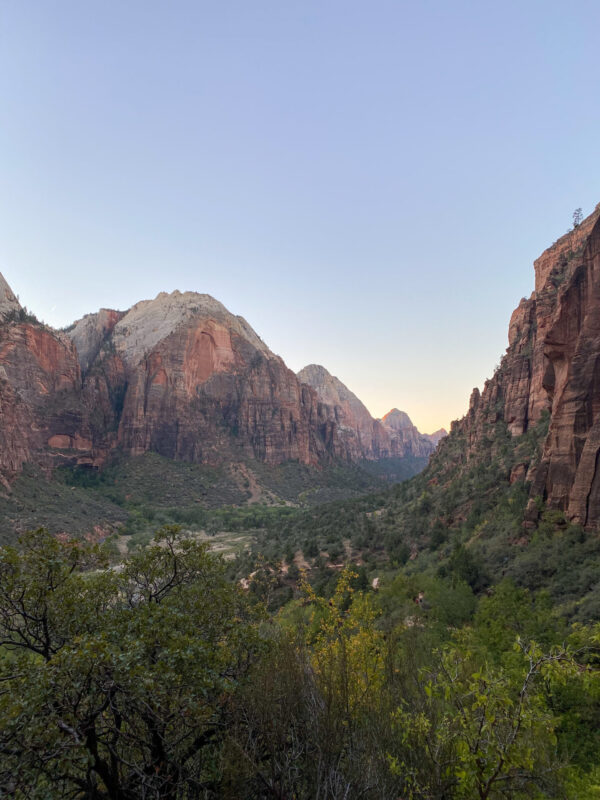
Canyonlands National Park
I had never heard of Canyonlands before my Utah road trip, but wow was I impressed. Canyonlands National Park is the largest national park in Utah. It feels like a never-ending expanse of canyons, rock formations and desert.
Arriving in Canyonlands felt like landing on another planet. The park is split into four distinct areas all open to be explored. The Island in the Sky district is one of the most popular areas of the park offering incredible panoramic views. Another famous district is The Needles, with unusual striking rock spires and colourful canyons. I spent two days exploring these two districts and was constantly blown away by the scenery.
With just five days in Utah, it would be impossible to see all of Canyonlands, but a trip there is still a must.
Bryce Canyon National Park
Bryce Canyon is the smallest of Utah’s Mighty 5 National Parks. Despite its size, Bryce Canyon is still a force when it comes to beauty and adventure.
This geological place of wonder is known for its incredible hoodoos – tall rock spires which have been formed by erosion. The park’s main attraction, the Bryce Amphitheatre, is a surreal landscape filled with hoodoos. I’d highly suggest visiting Bryce for sunrise or sunset where the orange and red rock formations create a stunning display.
Bryce Canyon is also filled with incredible hiking trails. It’s an absolute must on any Utah road trip itinerary.

Arches National Park
This destination is my personal favourite national park in Utah. Arches National Park is in the Red Rock Country of south-eastern Utah. It’s right next door to Moab, the ‘Adventure Capital of The West’.
Arches National Parks boasts an other-worldly landscape. It’s known for its iconic sandstone arches and has the highest concentration in the entire world. In fact, Arches National Park is home to over 2,000 natural stone arches. These geological wonders create a surreal landscape, especially during sunrise and sunset.
There are ample hiking opportunities in Arches National Park . One of my personal favourites is the Devils Garden area. The landscape here is breath-taking.
Arches National Park is a haven for hiking lovers, nature lovers and photography lovers alike.
Capitol Reef National Park
Last, and by no means least, is Capitol Reef National Park. The park is known for the ‘Waterpocket Fold’. A 100-mile-long geological fold in the Earth’s crust. The Waterpocket Fold exposes rock layers, showcasing the geological history of the region over millions of years.
Capitol Reef is also home to petroglyphs – ancient rock carvings. If you’re keen to see the petroglyphs, this will be the easiest spot to see them in this itinerary. The park is also home to Cassidy Arch, an impressive natural bridge which you can visit.

Black Arch Lookout
5-Day Utah National Parks Itinerary from Las Vegas
The below itinerary is a suggested 5-day road trip through Utah’s Mighty 5 National Parks from Las Vegas. This itinerary starts and ends in Las Vegas.
I’m going to be honest, 5 days is not enough time to see absolutely everything, but it’s enough time to try. If you have an extra day or two for your Utah National Parks road trip, I’d suggest adding a day at Canyonlands National Park.
I hope the below helps you to build your perfect Utah road trip itinerary.
Day one: Drive to Moab and visit Canyonlands National Park
Start your day in Las Vegas where you will begin your 5-day road trip through Utah’s National Parks.
Today is an early start and a long drive. The idea is to get a big chunk of the driving done today so you can focus the rest of your 5 days on exploring Utah’s National Parks.
Start as early in the day as possible and head straight to Canyonlands National Park . It’s going to be at least a 7-hour drive, so try and get on the road early enough to give you the afternoon in the park.
Canyonlands National Park is a HUGE and vast area, and it’s going to be impossible to explore it all in this time frame. I’d personally focus on one area of the park. If you don’t have much time in Canyonlands National Park, focus on the Island in the Sky area or the Needles district.
A good option for a few hours in Canyonlands is the Island in the Sky Scenic Drive . This incredible drive gives you a feel for the true vastness and beauty of this area. At the end of the road, there is a short hiking trail to Grand View Point. You’ll be rewarded with stunning views at every moment on this hike.
Another epic spot on the Island in the Sky Scenic Drive is the White Rim Overlook Trail . This is another fun short hike with some of the best views in the area. This hike is particularly amazing at sunset.
Here are some other things to do in Canyonlands National Park:
- Hike to Mesa Arch : this short hike leads you to the incredible Mesa Arch. It’s known for its epic sunrise views.
- Green River Overlook : this viewpoint boasts some of the best views in all of Canyonlands. It’s a convenient short walk from the parking lot and boasts stunning views of the Green Review. I’d highly recommend this spot for sunset.
- Newspaper Rock Historic Monument : if you’re venturing into the Needles district, stop at this monument to admire the incredible petroglyphs. There are some great hiking trails in this area.
- Chesler Loop Trail : this was one of my favourite hikes in Utah. At 10 miles (16km) it’s no short hike, but the diversity of scenery makes it all worthwhile.
Want to explore more hiking opportunities? Here are some of the best hikes in Canyonlands National Park .
Note : As mentioned above, if you have an extra day for your road trip, I’d consider spending more time at Canyonlands National Park. This is such a huge and diverse national park and there is so much to see here.
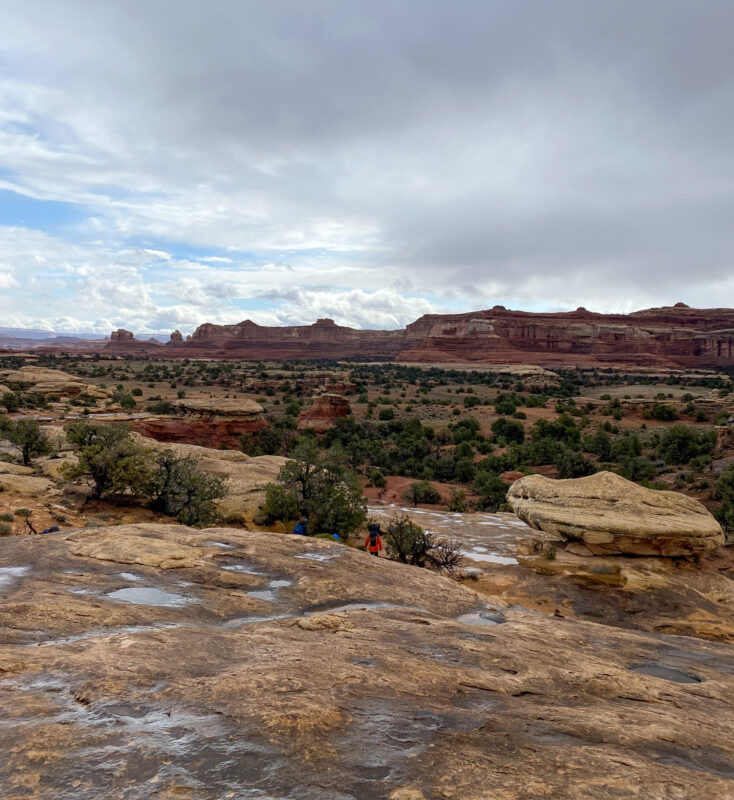
Where to stay in Canyonlands National Park
For night one and night two of your 5-day road trip, I’d suggest basing yourself in the nearby town of Moab . This town is close to both Arches and Canyonlands National Park making it the perfect spot to stay.
The town is also known as the ‘adventure capital of the West’. It’s full of exciting and adrenaline filled activities. There are ample restaurant choices and plenty of accommodation options.
For campsites in Moab, a good option is the Sun Outdoors campsite . This is where I stayed during my two nights camping in Moab. It’s a budget friendly option and is located relatively close to the town.
There are plenty of hotels and motels to choose from in Moab. I’d suggest using booking.com to find the most suitable accommodation. If you’re travelling in the peak season, make sure to book well in advance.
Day two: Arches National Park and Dead Horse State Park
Start the next morning in Arches National Park , just down the road from Moab. This is my favourite of Utah’s ‘Mighty 5’. It’s such a diverse and unusual national park. The scenery is otherworldly and I’ve never seen anything quite like it.
Spending a whole day in Arches is a good amount of time to see the highlights of this park. There are some epic hikes and viewpoints.
Start the day by heading to Delicate Arch for sunrise. Delicate Arch is one of the best places in Arches National Park to catch the sunrise, so you certainly won’t be alone on the trails. The hike is a 5km (3.1 miles) round trip. Unfortunately, it was cloudy on the day I visited for sunrise. It was still worth-it, nonetheless.
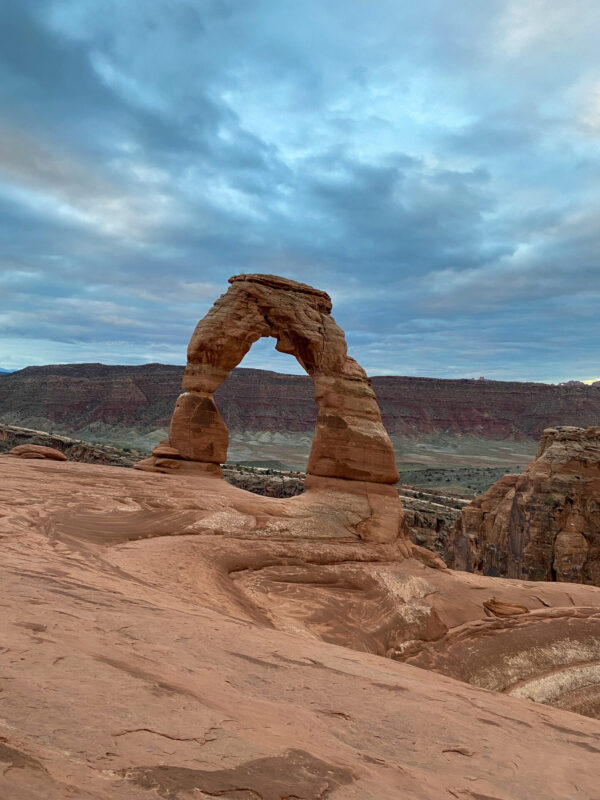
After your hike to Delicate Arch, fill your day by exploring other areas of the park.
Here are some of the top things to do in Arches National Park:
- Hike in Devil’s Garden : if there’s one place to visit in Arches National Park it’s Devil’s Garden. This has to be one of the most beautiful places I’ve ever visited. There’s a range of short hikes as well as longer hikes that allow you to explore this magnificent landscape. While in Devil’s Garden, be sure to hike to Double O Arch. The scenery on route is stunning. The Black Arch Overlook viewpoint is particularly spectacular.
- Drive the Arches Scenic Drive : this popular route connects all the main areas of the park, and you’ll need to drive along it to get to most places. If you’re not a keen hiker, this drive will allow you to see some stunning scenery with zero effort. There are ample viewpoints along the drive. Be sure to check out “Balanced Rock” during the drive.
Note : the Visitor Center in Arches National Park has more information about the park and its history.
I’ve written a whole guide on how to spend a day in Arches National Park .
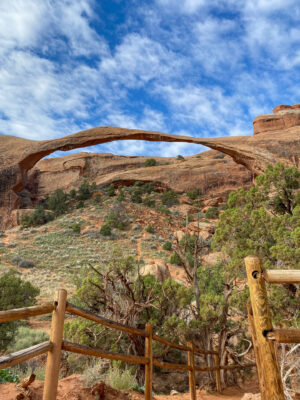
Landscape Arch

Double O Arch
Before heading to your accommodation, consider stopping at Dead Horse Point State Park for sunset. It’s a 30-minute drive (or longer), so a little detour, but wow is it worth it. Dead Horse Point State Park is a huge canyon area overlooking the Colorado River. It gives Grand Canyon vibes and is a great alternative for those who aren’t visiting there.
Head to the Dead Horse Point overlook for the best views at sunset. The park is also an International Dark Sky Reserve. This means it’s an epic spot for stargazing. Stick around after the sun sets to make the most of the night sky.
It would also be possible to visit Dead Horse Point for sunrise on day 3 if this fits better.
Important note : Arches National Park operates on a timed entry system. This means between the months of April and October, all visitors entering the park in a vehicle will need to book their slot in advance. This can be booked on the official website .
Accommodation options for Arches National Park
Arches National Park is only a few miles from Moab. I’d suggest basing yourself in Moab on nights one and two as it will allow you to easily get between Canyonlands and Arches National Parks. It also means you won’t need to move accommodation after day one.
If you’re keen to camp in Arches National Park , you will need to plan well in advance. There is only one campsite in the park. It’s open between March and October.
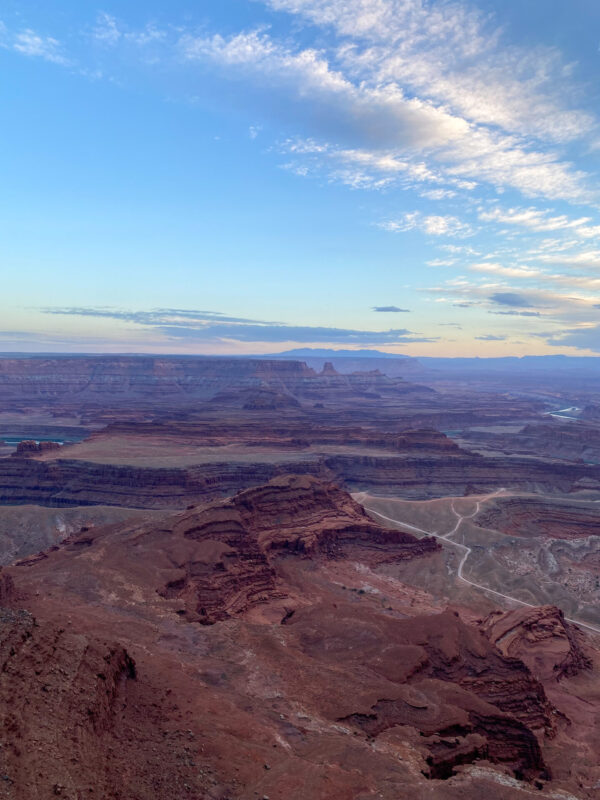
Day three: Drive to Capitol Reef National Park
Day three of your 5-day Utah National Parks road trip from Las Vegas is another packed one. Start your day early and make the 2-hour drive to Capitol Reef National Park .
Capitol Reef is famous for its unique geology, famous petroglyphs, and beautiful orchards. With only 5 days for this road trip, you won’t be able to see everything. However, even with just a few hours you’ll be able to see Capitol Reef’s highlights.
Spend the next few hours exploring this unique area. Here are some of the best things to do in Capitol Reef National Park :
- Hike to Cassidy Arch : if there’s one thing you do in Capitol Reef National Park, make it this. This 3.1 mile (5km) hike takes you through the canyon to the beautiful Cassidy Arch. This is a distinctive feature in the park and you can walk right out onto the arch, making for a stunning photo.
- Visit the Gifford Homestead : don’t leave Capitol Reef without trying a pie from the Gifford Homestead. This famous café is known for its sweet and savoury treats, with the cinnamon rolls and pies a particular favourite. The farmhouse is near the famous orchards so grab a snack and take a stroll through the trees.
- Admire the petroglyphs : Capitol Reef is known for its fascinating red rocks and geology, but it’s also home to some incredible ancient petroglyphs . The rock carvings are thought to have been created between 600 and 1300 AD.
- Capitol Reef Scenic Drive: if you have the time, drive the famous Scenic Road through Capitol Reef. This 7.9mile (12.7km) drive boasts breathtaking scenery. There are several stops along the way including scenic viewpoints and unique rock formations. As of Nov 23, the cost to enter the road in a private vehicle is $20.
Once you’ve finished your day in Capitol Reef National Park, start the 2-hour drive to Bryce Canyon National Park . The reason you’re driving there tonight? To catch the magnificent sunrise in Bryce Canyon the following the morning.
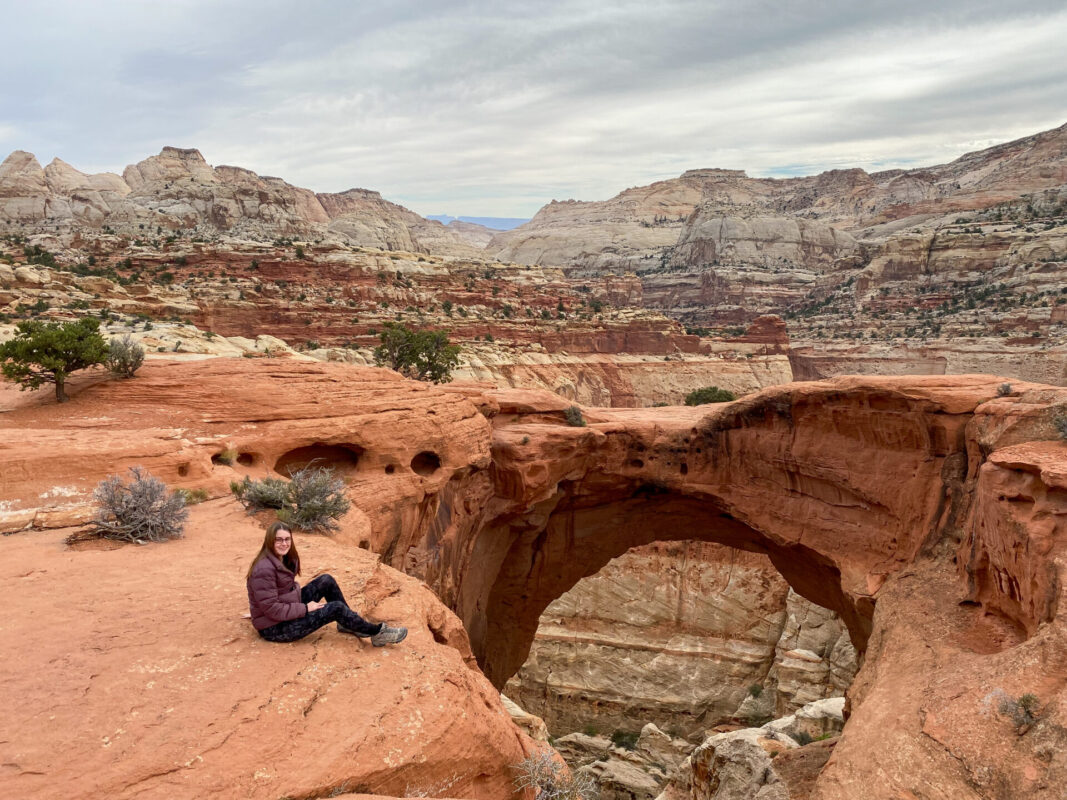
To get from Capitol Reef to Bryce Canyon, you have the option of driving the slightly longer scenic drive on Route 12 . This is known to be one of the most beautiful drives in America. The drive will take you about 2 hours and 30 minutes without stopping, but there are lots of scenic viewpoints on route.
Route 12 is also home to Grand Staircase-Escalante, a National Monument in Utah. I’ve spoken more about this below, but it’s an epic place to stop if you have the time. Realistically, you’ll struggle to fit this into this itinerary without sacrificing something else, but I’ll leave that up to you!
Of course, you can opt to spend the night in the Capitol Reef area instead. However, with only 5 days to see Utah, I’d suggest you keep moving and make the drive to Bryce Canyon on day 3. If you do choose to stay in Capitol Reef, it’s home to some epic, and I mean EPIC , stargazing.
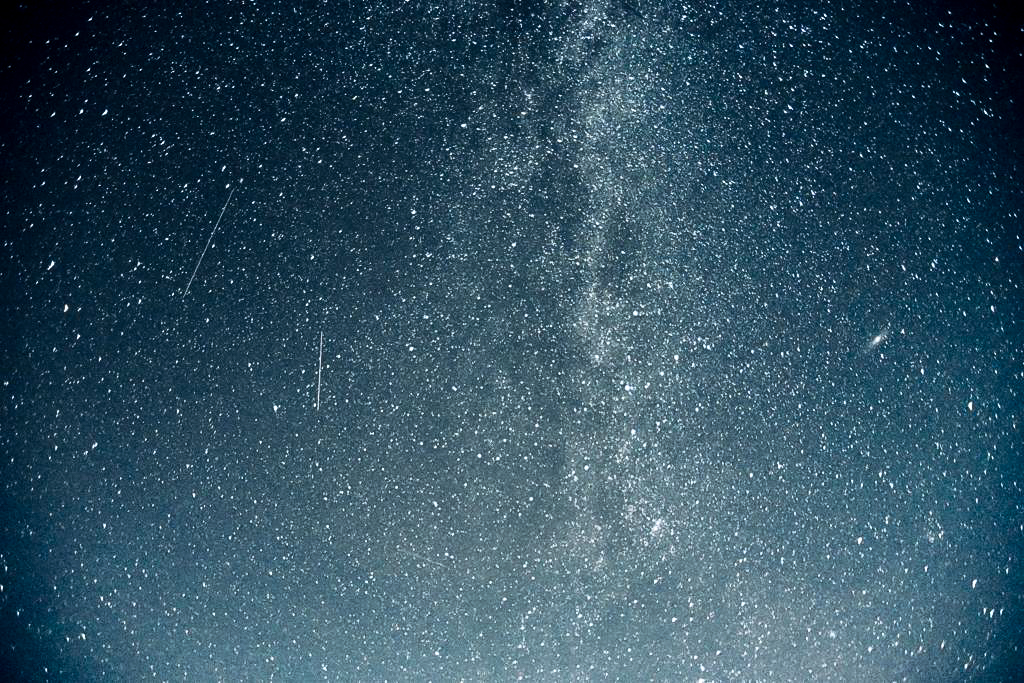
Accommodation options in Bryce Canyon
Seeing the sunrise in Bryce Canyon is a bucketlist activity, so I’d highly suggest staying as close to the park as possible.
For camping , there is the option to camp inside the park at either of the two campgrounds .
The only hotel inside Bryce Canyon National Park is Bryce Canyon Lodge . You’ll need to plan well in advance and it’s not exactly budget friendly, but you’ll be in a prime spot for the next day’s adventures.
Bryce Canyon City is the closest town to the national park and is just a few minutes from the park’s entrance and visitor center. The accommodation here is generally more affordable. The Bryce Canyon Shuttle also picks visitors up from here. There is a grocery store and other facilities.
Day four: Bryce Canyon National Park
Next up is the smallest of Utah’s National Parks – Bryce Canyon . Bryce Canyon is a spectacular spot in southern Utah. It’s known for its collection of hoodoos, tall and narrow rock spires which have been formed through erosion. Bryce Canyon is one of those places where you really have to “pinch yourself”. It’s beautiful beyond words can describe.
Some people only pass through Bryce Canyon on their road trip, but I suggest spending a full day in the park. It’s a truly wondrous place and you want to see as much as you can.
Bryce Canyon is particularly beautiful in the winter months. The viewpoints over the amphitheatre with a snow-covered landscape are breathtaking, especially at sunrise.
Begin your day in Bryce Canyon by catching sunrise over the Amphitheatre . The best spots are Sunrise Point and Sunset Point . There is a convenient parking lot meaning you won’t need to walk far, but get there early to ensure you get a space.
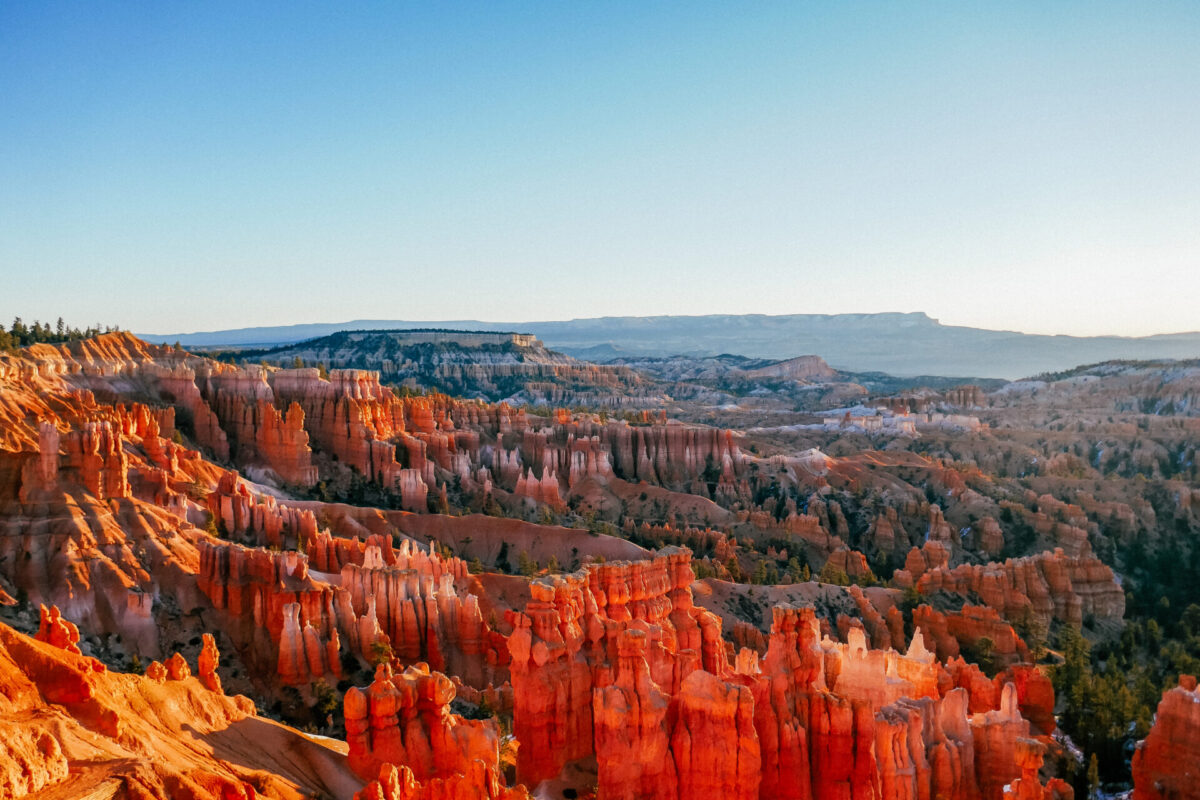
The sunrise I saw in Bryce Canyon is genuinely one of the best sunrises I have ever seen. There was something so magical about watching the sun rise above the horizon and the amphitheatre lighting up gold and red.
Bryce Canyon is a hiker’s paradise and after watching the sunrise, hit the trails to see more of this phenomenal destination.
Here are some of the best hikes in Bryce Canyon:
- Navajo Loop and Queen’s Garden : this is without a doubt one of the best hikes in Utah. The Navajo Loop trail is a 1.5mile (2.4km) trail that takes you down the famous switchbacks known as Wall Street. To see more of the incredible Bryce Amphitheatre, continue your hike on the Queen’s Garden Trail. This will get you up close and personal with those iconic red hoodoos.
- Bryce Point and the Peekaboo Lookout : this 5.2 mile (8.3km) hike can also be linked with the Navajo Loop trail. It’s a great way to walk amongst the hoodoos.
- Rim Trail : if you’re not a keen hiker but want to see more of Bryce, consider a stroll along the Rim Trail. The trail is 5.5miles (9.8km) long but you can walk as much or as little as you like. I’d suggest parking your car in the Sunrise Point Parking Lot and having a stroll from there. It’s a relatively easy hike that all can enjoy.
- Inspiration Point : before leaving Bryce Canyon, make a quick stop at Inspiration Point for more incredible views. This is one of my favourite viewpoints in the park.
I’ve written all about how to spend a day in Bryce Canyon National Park to help you plan your trip.

Wall Street at the Navajo Loop
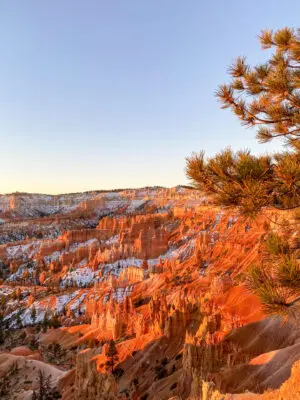
Sunrise in Bryce Canyon
After finishing your day in Bryce Canyon, drive to Zion National Park for the final day of your road trip through Utah’s National Parks. This drive should take you around 2 hours depending on traffic.
Note : you could always drive to Zion in the morning on day five. There’s lots to see in Zion however and if you’re keen to hit the trails, I’d suggest getting there this evening so you can spend a full day in the park.
Accommodation options in Zion National Park
Zion National Park is one of the busiest parks in America, so finding accommodation can be a challenge.
If you want to stay inside Zion National Park, your only option is Zion Lodge . This highly rated hotel is a popular option as it’s conveniently located near several hiking trails.
Zion National Park also has three campsites . I stayed at the Watchman Campground which is very well located. You normally need to book at least six months ahead of time to get a space here.
The nearby towns of Springdale and Cedar City also have ample accommodation options. I recommend using Booking.com to find your accommodation.
Day five: Zion National Park
The final stop of your Utah National Parks road trip is the iconic Zion National Park in Southern Utah. Zion is known for its dramatic red rock landscapes, towering cliffs and narrow slot canyons. Start your day as early as you can as there are so many things to do and see in Zion.
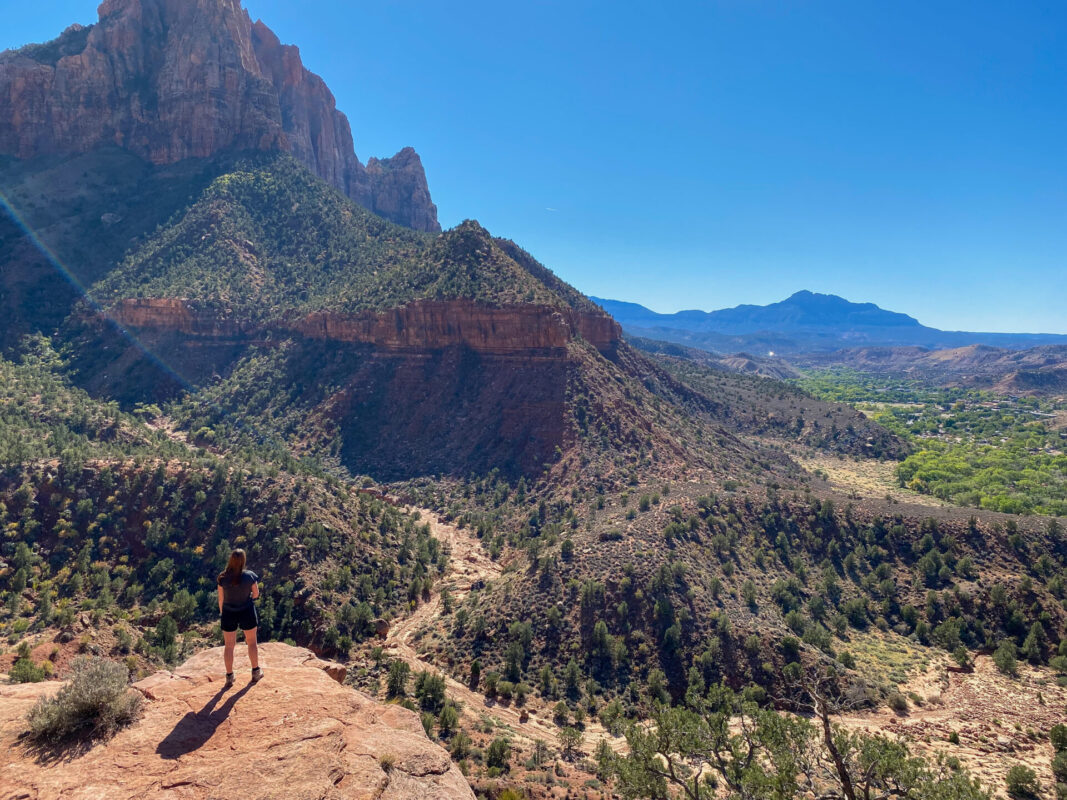
One of the best things to do in Zion is the famous Angels Landing hike. This stunning hike is known to be one of the most dangerous hikes in the United States. With its narrow ridges and steep cliff faces, it’s not for the faint of heart. The hike requires you to ascend nearly 1,500 feet above the canyon floor up a series of switchbacks known as Walter’s Wiggles. Once at the top, start the nerve-wracking walk along the narrow ridge.
At the summit of Angels Landing, you’ll be rewarded with panoramic views of the Zion Canyon, the Virgin River and surrounding red rock landscape. This is without a doubt one of the best hikes in America. Due to its popularity, the National Parks Service recently introduced a permit system . You won’t be able to do this hike without a permit.
Another iconic hike in Zion National Park is ‘ The Narrows ’. This hike takes you through the Virgin River’s narrow slot canyons (hence the name). There really is no other hike like it and it’s an absolute must on your Zion itinerary.
The Narrows hike requires wading and, at times, swimming through the river itself. You can hire equipment for the hike right outside the park.
Here are some other things to do in Zion National Park:
- Emerald Pools hike : the Emerald Pools hike starts at the famous Zion Lodge. There are three different pools: lower, middle and upper. You can walk to just one, or complete the full trail which is a total of 3.1miles (5km). The walk boasts stunning views including waterfalls, panoramic vistas and of course, the pools themselves.
- The Watchman Trail : this is a shorter hike (2.7 miles) but is stunning nonetheless. It’s located near the entrance of the park so is a great option for those with less time. The start of the hike is right by the Visitor Center and the Watchman Campground.
- Ride the shuttle bus : if you’re visiting Zion in the peak season, you’ll need to take the shuttle bus to get around the park. A ride on the shuttle bus is a great way to explore the park with minimal effort. There are incredible views around every corner.
- Stargazing : Zion is known for its epic stargazing. Grab a blanket and admire the night sky, or join a tour to learn more about this wondrous night sky.
Discover more hikes in Zion National Park .

Angels Landing Hike

Important note : private vehicles are not allowed into Zion National Park during the peak season (generally March to November). You’ll need to leave your car in a parking lot and catch the Zion shuttle bus to get around.
After ending your day in Zion, you’ve finished your 5-day road trip through Utah’s National Parks. Head back to Las Vegas or stay an extra night in Zion.
Utah Road Trip: Las Vegas to Salt Lake City Itinerary
Planning a Las Vegas to Salt Lake City road trip? The above itinerary can be adapted to suit that.
Here’s what I would do if I were driving from Las Vegas to Salt Lake City.
Stop one: Zion National Park Start your road trip from Las Vegas to Salt Lake City by visiting Zion National Park.
Stop two: Bryce Canyon National Park Next up, spend a day exploring Bryce Canyon. Be sure to catch one of the iconic sunrises.
Stop three: Capitol Reef National Park Move on to the stunning Capitol Reef. If you have the time, take Route 12 and make a stop as Grand Staircase-Escalante.
Stop four: Moab The next stop is Moab. Spend a couple of days exploring Canyonlands and Arches National Parks.
Stop five: Salt Lake City Finish your epic road trip from Las Vegas in Utah’s capital, Salt Lake City. Consider visiting the Bonneville Salt Flats to see more of Utah’s diverse landscapes.
Other places to visit on a road trip from Las Vegas
If you have an extra day or some extra time for your road trip, consider one of these additional stops.
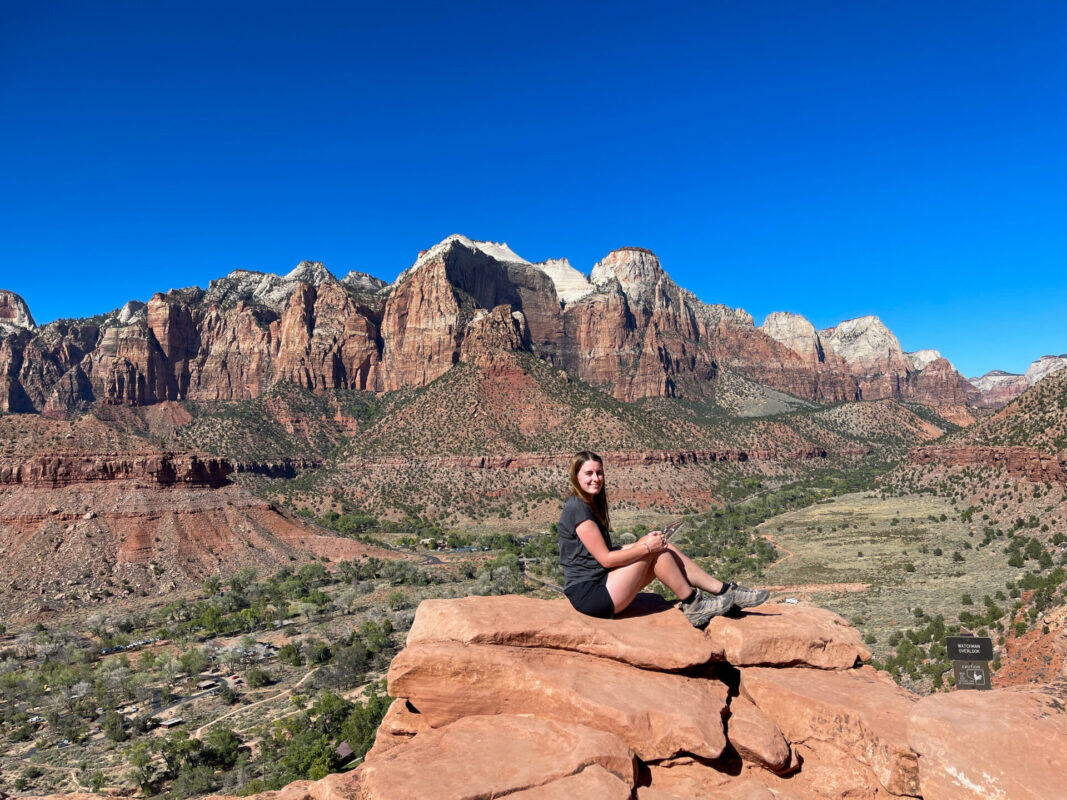
Bonneville Salt Flats (Utah)
The iconic Bonneville Salt Flats are one of Utah’s most iconic and surreal landscapes. The Salt Flats are about 110 miles from Utah’s capital, Salt Lake City. This unique destination features a vast expanse of salt crust, creating an almost otherworldly environment.
This 30,000 acre spot requires some planning to visit, but it’s well worth it.
Grand Staircase-Escalante (Utah)
The Grand Staircase-Escalante is a National Monument in Utah. Although not officially a national Park, a stop at the Grand Staircase-Escalante is a must if you have the time.
The area is home to some incredible hikes and scenery. With waterfalls, canyons, red rock cliffs and narrow slot canyons, Grand Staircase-Escalante is an epic spot on a Utah road trip.
While here, consider hiking to Lower Calf Creek Falls. The track is 6.2 miles (10km) round trip and takes you to a beautiful waterfall. It was one of my favourites hike in Utah. There is also information about the area on route.
The National Monument can easily be added to any Utah itinerary. The park is located on Route 12 between Capitol Reef and Bryce Canyon.
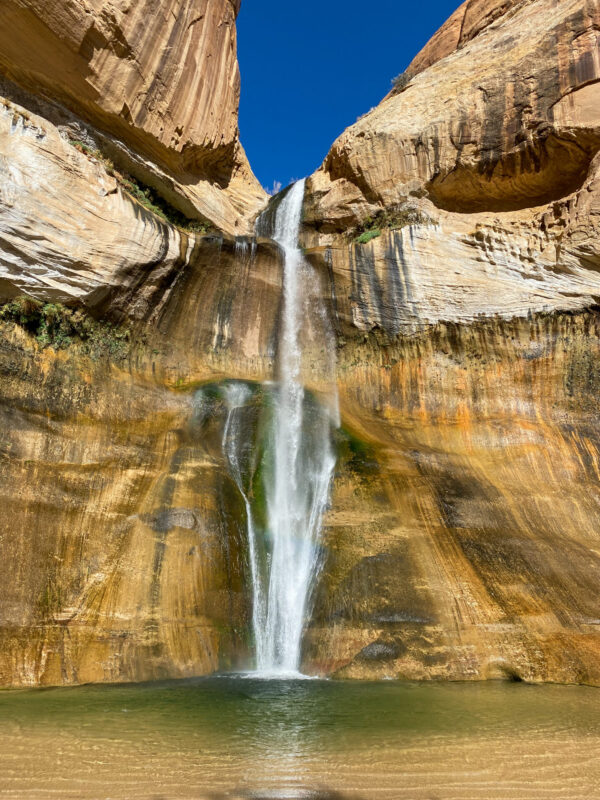
Red Canyon (Utah)
Southern Utah is home to Red Canyon, an incredible display of hoodoos, spires and cliffs. Red Canyon is often overlooked by the nearby Bryce Canyon, but it’s worth visiting if you have the time.
It’s right in the heart of Dixie National Forest with ample hiking trails. Red Canyon can be found between Bryce Canyon and Zion National Parks.
Valley of Fire State Park (Nevada)
Less than an hour from Las Vegas is the Valley of Fire State Park. If seeing petroglyphs is high on your list, then you’re in luck. The petroglyphs here are estimated to be around 2000 years old. The park is also home to the iconic Fire Wave, a vibrant sandstone rock formation.
Thinking of visiting Valley of Fire State Park. Here’s everything you need to know .
Hoover Dam (Nevada)
The Hoover Dam is an engineering marvel which spans the border between Arizona and Nevada. It’s a bit of a detour from Utah to reach here, but if you have the time I’d highly recommend it. The scale of the Hoover Dam is mind-boggling. You can walk across the Hoover Dam or opt to join a guided tour .
The Grand Canyon (Arizona)
The Grand Canyon is one of the world’s most recognisable natural landmarks. This huge canyon is a whopping 1.217 million acres. It’s possible to visit the Grand Canyon as part of a Utah road trip. I’d add this in as your first stop out of Las Vegas (or last stop when returning).
Want to see more of Arizona including the famous Monument Valley or Horseshoe Bend? Consider a road trip through Arizona .
Did you find this 5-day itinerary for Utah’s National Parks from Las Vegas helpful? Share on social media below or save for later.
OTHER UTAH POSTS
Have you checked out my other Utah themed posts to help you plan the ultimate road trip?
One Day in Arches National Park: The Perfect Itinerary
How to Spend One Day in Bryce Canyon National Park
Ultimate Packing List for Visiting Utah’s National Parks
Related Posts

Backpacking Malaysia: Ultimate 2024 Guide & Itinerary
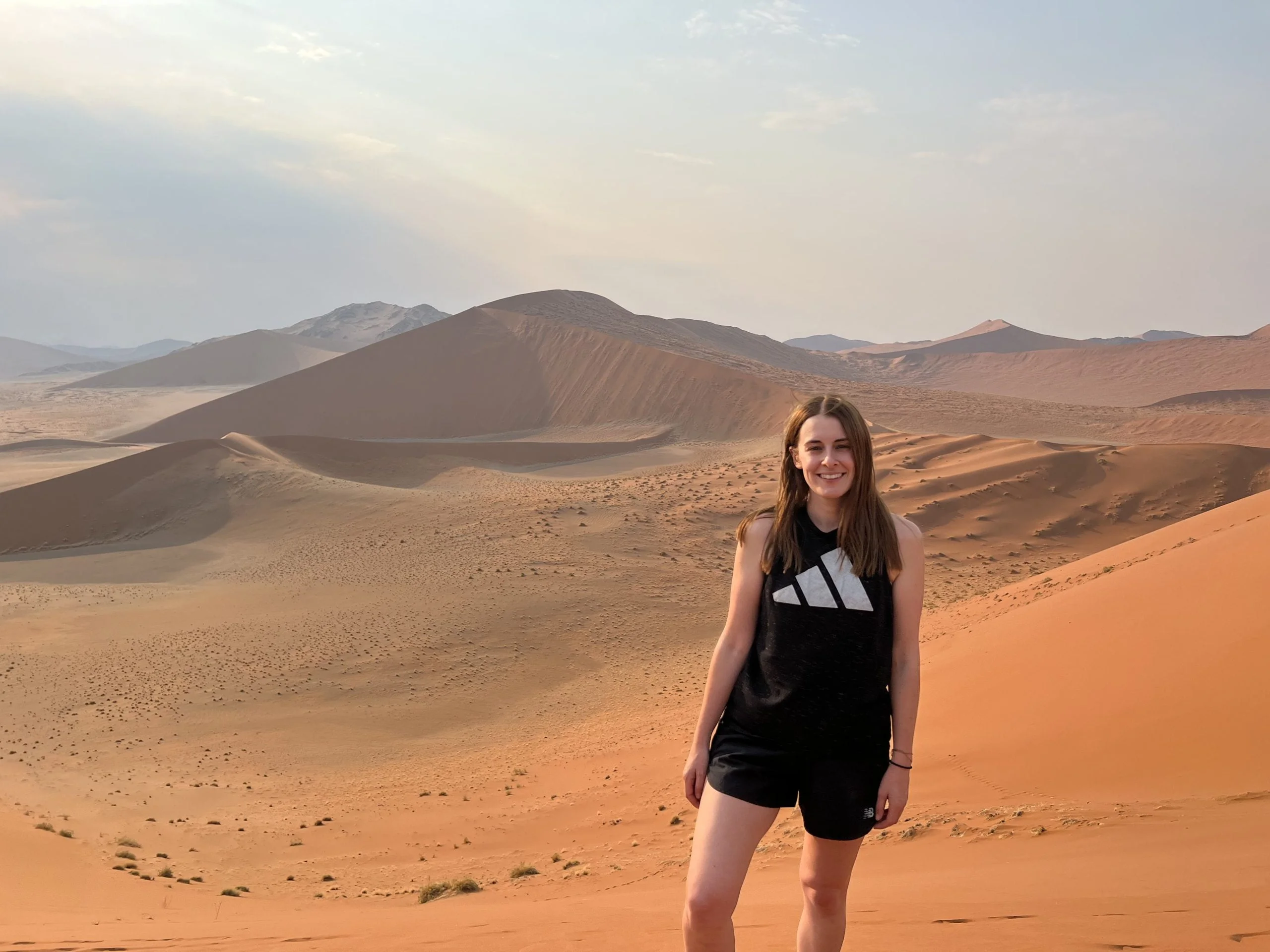
Ultimate Namibia Road Trip: Self-Drive Itinerary and Top Places to See

Complete 7 Day Iceland Itinerary: THREE Different Road Trip Ideas
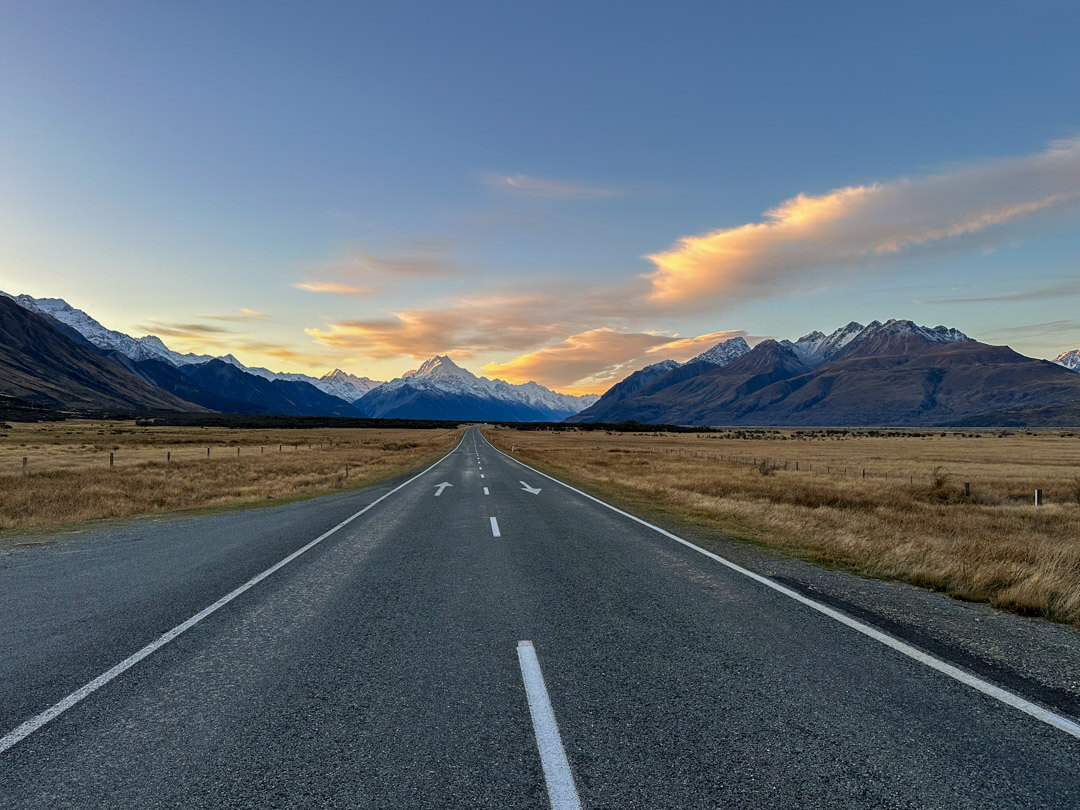
30 Best Places to Visit on New Zealand’s South Island
How to see Utah's "Mighty 5" national parks on an epic road trip

Jun 2, 2024 • 12 min read

Link up Utah's "Mighty 5" national parks with this epic driving route © Peter Unger / Getty Images
Utah might not have the most national parks of any state – that honor goes to California – but it certainly has the highest concentration.
All of Utah’s "Mighty 5" are within easy driving distance of one another, meaning that the state is prime for an epic national parks road trip that you can even squeeze into a short amount of vacation time. With only a week to spare, it's possible to get to know the distinct personalities of each of the state's national parks.
Here's how to plan an unforgettable drive in Utah .
Where should you start a Utah national parks road trip?
You can tackle Utah’s national parks west to east or vice versa, depending on your starting destination. Going from west to east is generally the most popular option because Zion National Park is just a few hours from the international airport in Las Vegas . You could also start this road trip in Salt Lake City , heading for either Zion or Arches first.
Where should I rent a car for a Utah road trip?
If you’re flying in to visit Utah’s national parks, it’s easiest to rent a car at your arrival airport. After picking up the car, head to the grocery store to buy water, snacks and other supplies before you hit the road, especially if you’re looking for something specific. The gateway towns to Utah’s national parks are small, and their stores often don’t have as wide of a selection.
When is the best time to drive between Utah's national parks?
Late spring and early fall are the best seasons for road tripping in Utah. Summer is a popular time, but that means more cars on the road and more hikers on the trails. Winter is great for solitude seekers, but make sure you have the know-how to drive on snowy roads and a backup plan in case of closures or worse. State highways in some areas might be shut down until May because of heavy snowfall, particularly in the high elevations around Brian Head, north of Zion National Park.

Stop 1: Zion National Park
The vibe: Awesome canyon and iconic hikes
What to do: Zion Canyon is one of the most intriguing natural wonders in the country, and it chalks up the visitor numbers to prove it. See what makes Zion so extraordinary by taking on the national park’s two iconic hikes: Angels Landing ( permit required ), a chain-assisted white-knuckle climb to a lofty narrow plateau, and the Narrows, where the trail is the Virgin River and you wade through the water as it churns through a towering slot canyon.
What to eat: In the heart of the canyon, the historic Zion Lodge has two places to eat: a small cafe and a full-fledged restaurant. The food isn’t particularly memorable, but the setting certainly is, and it’s the only place to eat inside the national park if you don’t bring your own supplies. Just outside Zion National Park’s south entrance, Zion Canyon Brew Pub was the first microbrewery in southern Utah and serves up pub grub that pairs perfectly with its beers. More restaurants, coffee shops and small grocery stores abound in Springdale, the gateway town hugging Zion’s south entrance.
Where to stay: Zion National Park has two in-park accommodation options: camping or Zion Lodge . You need to book months in advance to get a reservation for either. Springdale has lots of excellent places to stay. See if rooms are available at Under the Eaves Inn , Red Rock Inn or Desert Pearl Inn , or head a bit further from the canyon. In East Zion, Zion Ponderosa Ranch Resort is ideal for families, with tons of activities for all ages. To the west, AutoCamp Zion offers a hip stay in Airstream trailers, and Under Canvas has set up gorgeous luxury glamping tents on Kolob Terrace Road.
The drive (75 miles, 1 hour and 25 minutes): Leave Zion National Park through the east entrance, driving through the tight-squeeze Zion–Mt Carmel Tunnel, which was the longest tunnel in the country when it opened in 1930. Continue on Hwy 9 to Mt Carmel Junction and then head north on Hwy 89. Turn east on Scenic Byway 12, nationally recognized as an "All-American Road" for its history and landscapes. You get a taste of what’s in store at the next national park as you drive through redrock arches and past intriguing rock formations shaped like Crayola crayons – and colored just as brightly.
Want to know more about Zion? Here's our guide
Stop 2: Bryce Canyon National Park
The vibe: Alien rock formations
What to do: Bryce Canyon hides its treasures from view when you first enter the park, but as soon as you reach the rim of the plateau, an army of rock spires called hoodoos stands at attention in the bowl of the natural amphitheater. The paved road through the national park is sprinkled with scenic overlooks where you can stop and gawp at these mesmerizing formations. Inspiration Point and Rainbow Point are wow-worthy pull-off points. But getting in among the hoodoos is a must. Hike the Navajo Loop from Sunset Point, book a horse ride on Peekaboo Loop or find a quieter collection of hoodoos on the Fairyland Loop.
What to eat: Bryce Canyon is Utah’s only other national park (besides Zion) that has a historic lodge inside the park, which has a restaurant (don’t miss the elk chili). There’s also a park general store that sells pizza, craft beer, ice cream and snacks. Bryce Canyon City is just outside the national park gates, but the restaurants in the small town of Tropic, a short drive to the southeast, are better. Try the pulled pork at IDK Barbecue or have a classy white-tablecloth dinner at Stone Hearth Grille .
Where to stay: Book far in advance to snag a place to sleep inside the park, either a campsite or a room at Bryce Canyon Lodge . Bryce Canyon City has several options near the park entrance, but it’s worth driving a little further to Bryce Glamp & Camp , a scenic, secluded spot where you can watch the night sky from your bed in a bubble dome.
The drive (125 miles, 2 hours and 40 minutes): Continue on Scenic Byway 12, which gets even more beautiful as you crest the rollercoaster hills and sail down the switchbacks. Much of the surrounding land is part of Grand Staircase–Escalante National Monument , which covers nearly 2 million acres. Tempting trailheads beckon, particularly around the towns of Escalante and Boulder – pull over and hike if you have time. Scenic Byway 12 ends at Hwy 24 near Torrey, the gateway town to Capitol Reef National Park.
First time in Bryce Canyon? Here's what you need to know

Stop 3: Capitol Reef National Park
The vibe: Hikes through history
What to do: Capitol Reef wears its past on its sleeve, and when hiking in this national park, you’re following in the footsteps of many generations past, from the little-understood Native Fremont people to Mormon settlers. Don’t miss the petroglyphs east of the Capitol Reef Visitor Center (accessible via a boardwalk) and on the hike through Capitol Gorge, where ancient Native rock art is carved a short distance from the Pioneer Register, recording the names and dates of 19th-century settlers who passed through this slot canyon. In the center of the park, Fruita was a Mormon settlement established in 1879 and is well known for its orchards, which the National Park Service still maintains. Pick up one of the famous fruit pies from Gifford Homestead , where Fruita's last inhabitants lived.
What to eat: Torrey is a short drive from the entrance to Capitol Reef National Park, and for such a small town, it has some impressive food options. At Torrey Grill & BBQ , a Culinary Institute of America graduate makes magic with smoked meats, while adorable Wild Rabbit Cafe serves phenomenal all-day breakfasts and sandwiches. Hunt & Gather is a surprising spot for fine dining, showcasing lovingly plated dishes of local ingredients.
Where to stay: Capitol Reef has one developed campground , as well as free primitive sites in the backcountry ( free backpacking permit required ). If you’d rather stay within four walls, try Torrey Schoolhouse B&B , a 1914 schoolhouse brought back to life as an elegant bed and breakfast. One of the best places to stay in Torrey is Skyview , which has rooms with hot tubs that look out on the redrock scenery, geodesic domes with skylights over the bed for nighttime stargazing, and a rooftop terrace.
The drive (155 miles, 2 hours and 30 minutes): Head east on Hwy 24, called the Capitol Reef Scenic Byway, which turns north at Hanksville. If you have time, detour west of Hwy 24 to Goblin Valley State Park to wander among its bizarre rock formations. On the east side of Hwy 24, Horseshoe Canyon is part of Canyonlands National Park and has one of the most significant Native rock art sites in North America – it’s nicknamed the "Louvre of the Southwest." The road to Horseshoe Canyon is not paved, and a high-clearance 4WD vehicle is recommended. When Hwy 24 comes to an end near Green River, join Interstate 70 east and carry on until the Moab turnoff at Hwy 191. Turn west on Hwy 313 to reach another area of Canyonlands National Park.
Hanging around in Capitol Reef? Here's what to do there

Stop 4: Canyonlands National Park: Island in the Sky district
The vibe: Epic views
What to do: Canyonlands is Utah’s largest and least-visited national park. Few travelers venture to its most remote areas (and those who do require suitable vehicles and self-sufficiency), and Canyonlands’ quieter nature can be a welcome break from Utah’s busier parks. It is divided into four districts, the most accessible of which is Island in the Sky, near Moab . This area stretches out atop a majestic mesa thousands of feet above the Colorado and Green Rivers, the powerful forces that sculpted this land into sheer canyons and needle-like pinnacles. The scenic drive through the Island in the Sky district dawdles past a number of overlooks. Get a 360-degree bird’s-eye view of the landscape from the humbly named Grand View Point where the paved road ends.
What to eat: Moab’s main street is lined with great restaurants where you can fuel up for a day out, and the town is just a 40-minute drive from the Island in the Sky Visitor Center. In the northern part of Moab, Proper Brewing has an excellent beer garden where you can kick back and enjoy a burger and a Utah-made brew.
Where to stay: The Island in the Sky district has one campground . More campsites on Bureau of Land Management (BLM) land are scattered along Hwy 313, the main road into the national park, as well as along Hwy 128 and the Colorado River south of Arches National Park. For hotel accommodations, stay in Moab for an easy journey. Field Station is one of our top picks for location, price and adventure-seeking atmosphere, housed in a well-renovated roadside motel.
The drive (29 miles, 40 minutes): Canyonlands and Arches are about as close as two national parks can be, and it’s just a 30-minute drive from the Island in the Sky Visitor Center to Arches Visitor Center. If you can’t get enough of the views, take a detour to Dead Horse Point State Park for even more memorable vistas. Take Hwy 313 to Hwy 191 and drive south for a few miles to the turnoff for Arches National Park.
Want to see even more of Canyonlands? Here's what you need to know

Stop 5: Arches National Park
The vibe: Arches galore
What to do: The main draw of Arches is right in its name, and nowhere on Earth has more of this type of rock formation than this national park. Delicate Arch is the most iconic, enshrined on Utah’s license plates, and many more can be seen along the park’s main paved road on short hikes and from easy-to-reach viewpoints. At the end of the road, the Devils Garden Trail packs several arches into an easy or adventurous hike, depending on how far you want to go, including 306ft Landscape Arch, one of the longest in the world.
What to eat: There’s nowhere to eat inside Arches National Park, so bring in supplies from Moab or fuel up in town before or after a day of arch admiring. Find a variety of crowd-pleasing, budget-friendly options at Moab Food Truck Park or reserve a table at Desert Bistro , one of the best restaurants in this part of the state, for game and seafood in an 1892 former dance hall.
Where to stay: Arches has one campground inside the park (book far in advance), and campers can also find lots of sites on BLM land just outside the park boundaries. Otherwise, Moab makes for an excellent base camp, with plenty of hotels along its main street and beyond. Secluded south of town, ULUM Moab offers luxury glamping tents with views of its very own arch.
The drive: Round off your Utah national parks road trip by heading back to Salt Lake City (235 miles from Moab) or Las Vegas (460 miles from Moab). The fastest but least interesting way to get to Las Vegas is to take the interstates (I-70 north of Moab and then I-15 south), but if you have time, take the long road south from Moab, stopping at the Needles district of Canyonlands National Park, checking out film-famous Monument Valley on Navajo land and testing your luck by trying to get a permit for the Wave – one of the most sought-after hikes in the Southwest – in Kanab.
Need more info about Arches? Here's our guide for first-time visitors
Tips for EV drivers
Despite how remote some parts of the state are, Utah is an excellent place for an EV road trip, especially to the national parks. Some campgrounds and many hotels, including Zion Lodge inside the national park, have EV chargers for guests. Tesla has several Superchargers across the state, particularly along I-15 and I-70, including in St George (about 45 miles from Zion National Park’s south entrance), Green River and Moab (close to Arches and Canyonlands National Parks) and Blanding (about 70 miles from Canyonlands’ Needles district).
A tricky stretch for EV drivers is the journey between Capitol Reef National Park and Moab. The Capitol Reef gateway town of Torrey has chargers, as does Green River, but you might need to be careful about how many places you explore in between.
Explore related stories

National Parks
Jun 7, 2024 • 9 min read
Follow Lonely Planet's Laura Motta on her solo road trip from Las Vegas to Nevada's Great Basin National Park

Apr 14, 2024 • 8 min read

Apr 10, 2024 • 6 min read

Mar 29, 2024 • 6 min read

Jan 5, 2024 • 6 min read
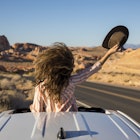
Nov 16, 2023 • 4 min read

Oct 18, 2023 • 9 min read

Mar 15, 2023 • 9 min read

Mar 15, 2023 • 11 min read

Aug 19, 2022 • 6 min read
- All Itineraries
- Featured Itineraries
- Wander Wall
- Share an Itinerary
- Join Itinsy
Best Utah National Parks Itinerary from Las Vegas
Opportunities for heart pounding adventure and quiet reflection in nature will present themselves at every turn during this utah national parks itinerary from las vegas..
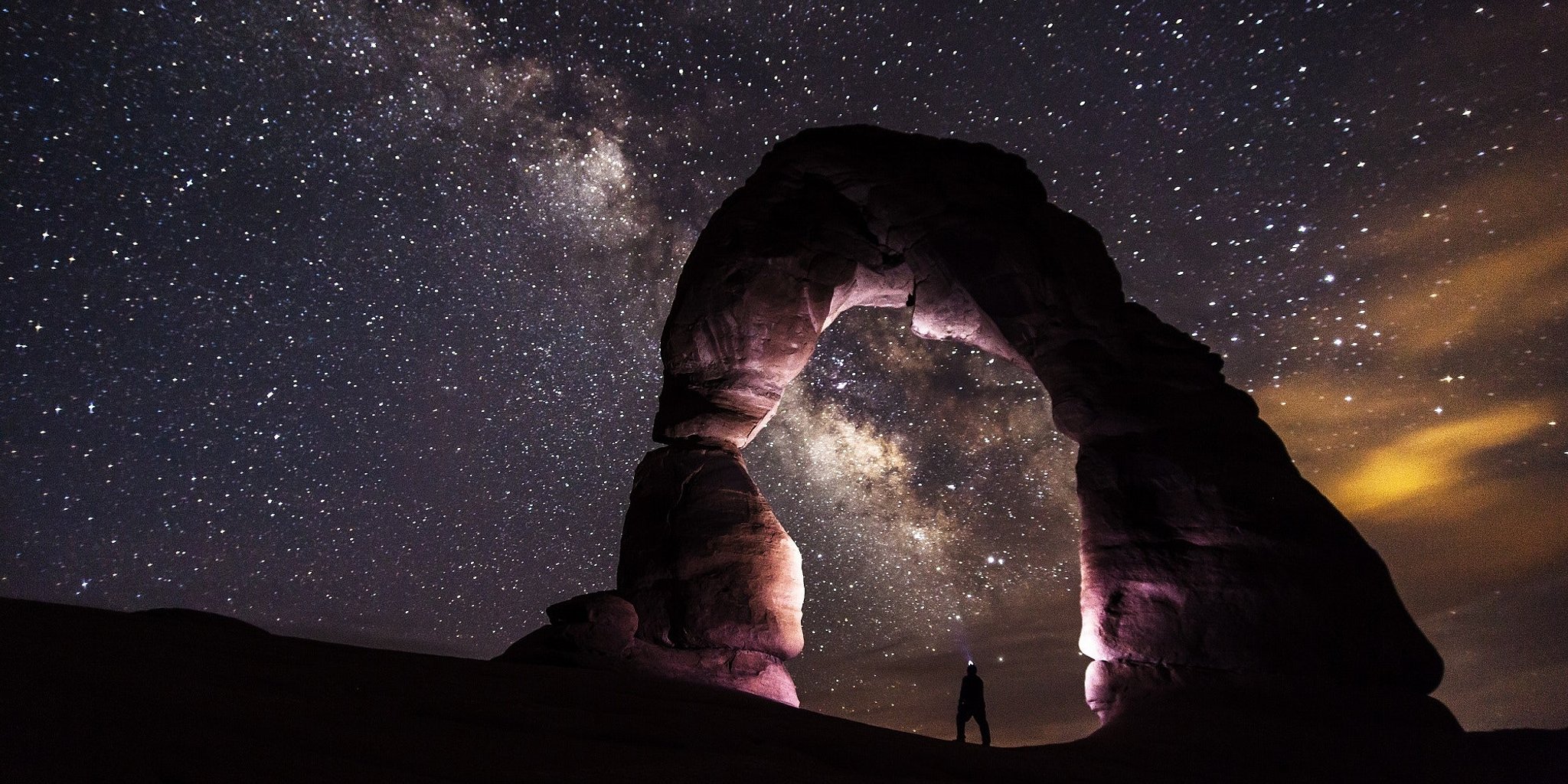
The “Mighty 5” national parks in Utah are Arches National Park, Bryce Canyon National Park, Canyonlands National Park, Capitol Reef National Park, and Zion National Park. Each one offers visitors something new to see and explore, from sweeping canyons and monuments to red rocks and alpine forests, all working together to create the breath-taking landscape of the Colorado Plateau. Follow along for ideas on planning the best Utah national parks itinerary from Las Vegas!
The McCarren International Airport will serve as your gateway to Utah’s National Parks, allowing visitors the opportunity to spend a few days in Las Vegas before leaving the neon lights behind in exchange for twinkling stars and moonlight. The diverse landscape among the five national parks, linked by remote scenic drives and numerous state parks, will transport you to a world that feels far away from the glitz and glamour of Las Vegas. Opportunities for heart pounding adventure and quiet reflection in nature will present themselves at every turn during this Utah national parks itinerary from Las Vegas.
Zion National Park
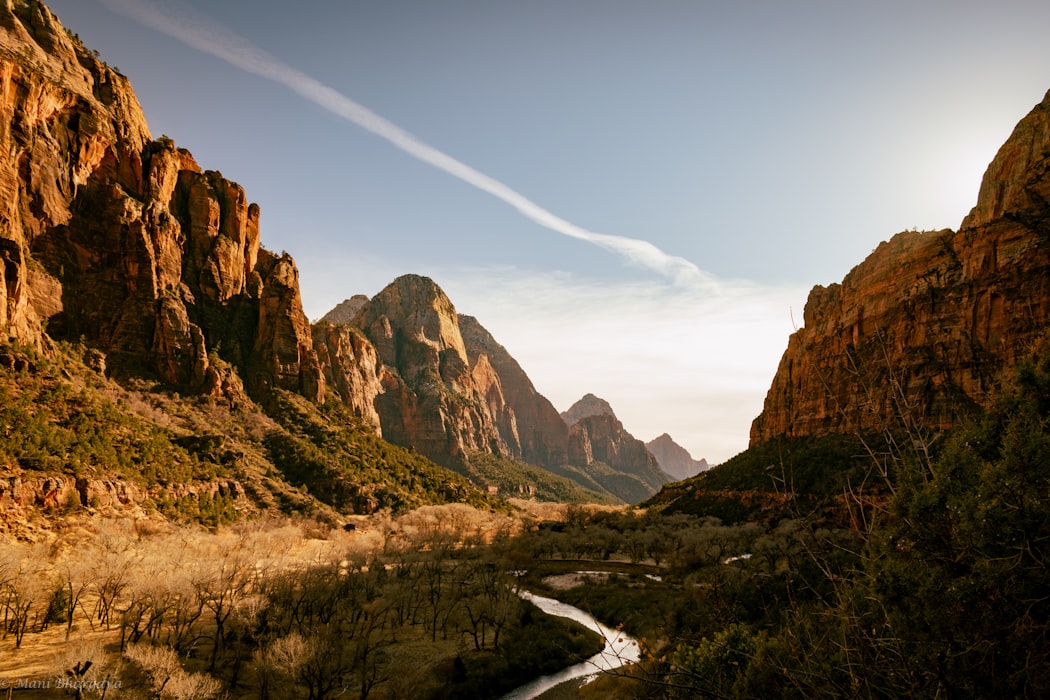
The closest national park to Las Vegas, Zion National Park is the first stop on your Utah national parks itinerary from Las Vegas. Zion means “the Promised Land” in Hebrew and this iconic park certainly lives up to its name. Located only 168 miles from Las Vegas, Zion National Park is most well-known for the expansive Zion Canyon , a gorge reaching depths of almost 3,000 feet in some areas. Along the canyon are a multitude of opportunities for hiking, horseback riding, canyoneering, and rock climbing. There are two scenic routes to take through the park, each offering distinctive sites and scenery.
The Zion Canyon Scenic Drive is home to the most well-known sites of interest in the park. From mid-March through November, there is a complimentary shuttle bus that takes visitors on an approximate 8-mile route through the park, with several stops along the way. During this time, car traffic is disallowed on this stretch of road. The Human History Museum will be one of the first stops, telling the cultural history of Zion through interactive displays and a large model of the park. The permanent collection of items at the museum includes American Indian artifacts and exhibits illustrating the path from pioneer settlement to creation of the park. Rangers are on hand to answer questions and offer advice for your time in the park.
Experienced hikers will want to set off on the narrow trail to Angel’s Landing , offering one of the best views of the surrounding Zion Canyon, while hikers of all abilities will want to experience at least some time in The Narrows . The narrowest section of Zion Canyon, with many portions completely within the Virgin River, is hailed as the quintessential Zion experience. Guided tours are available and are recommended for beginners or those unfamiliar with the surrounding area.
Another popular hiking spot in the park is the Emerald Pools area, offering trails suitable for families that can accommodate strollers and wheelchairs, to strenuous trails at higher elevations. There are three levels of pools, Lower, Middle and Upper, amid the trails, each a bit harder to get to than the last. All trails will offer fantastic views of brightly colored mesas and buttes, dotted with clumps of green trees.
A short walk from the shuttle along the Weeping Rock Trailhead is an alcove under a sandstone bowl, formed by water erosion, with water seeping from the rock forming hanging gardens and anything from a slow trickle of water to a rushing waterfall, depending on the season and level of recent rainfall. The Riverside Walk , a paved trail that follows the Virgin River, leads through more hanging gardens and waterfalls, and is home to an array of birds and wildlife.
At the east entrance/exit of Zion National Park, is the Checkerboard Mesa , a white colored plateau with a distinctive checkerboard pattern surrounded by cliffs covered in white and amber striations and swirls. The nearby town of Springfield is the best place for gathering supplies and booking guided tours. Courses and equipment rentals for canyoneering are available just about year-round, and horseback riding tours along the Virgin River can be booked from March through October.
The Zion Mount Carmel Highway is the second major route through the park. Running across the park in a southeastern direction above the valley, cooler air can be enjoyed in the higher elevations as the road winds along the side of the cliffs and through a very narrow tunnel through the stone. There are no shuttles along this route, but there are many overlooks, including some along the popular Canyon Overlook Trail , an easy one-mile round-trip hike through towering pine trees.
With the Zion Mount Carmel Highway offering a parallel experience to the Zion Canyon Scenic Drive, and with so many unique sites to explore between the two, you will want to devote at least two days during your Utah national parks itinerary within Zion National Park. From Zion, you will travel approximately 86 miles to Bryce Canyon National Park. Consider a detour along the Valley of Fire Scenic Byway through the Valley of Fire State Park to see the iconic Elephant Rock , a natural sandstone arch resembling one of the massive mammals, with a unique appearance of multiple chunks of rock stacked together.
The best Utah national parks 3-day itinerary from Las Vegas would incorporate a mix of attractions and sites from Zion National Park and the next location on our list, Bryce Canyon National Park.
Bryce Canyon National Park
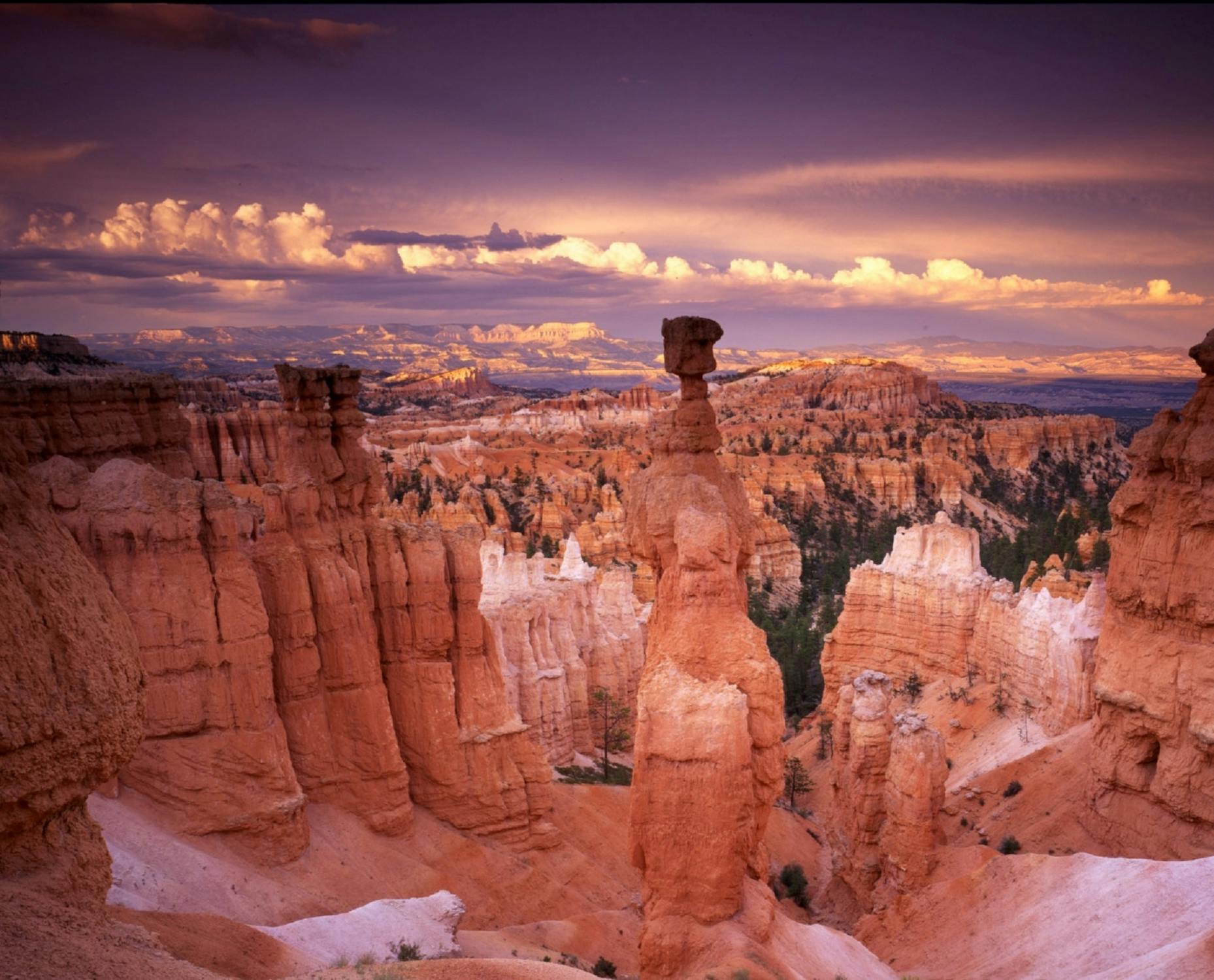
“Otherworldly” is a word often used to describe Bryce Canyon National Park. Full of red rocks, fabulous vistas, and pink cliffs, this national park is also home to the largest concentration of hoodoos in the world. Hoodoos are columns or pinnacles of weathered rock, generally formed within sedimentary and volcanic rock formations. These unique structures aid in creating a landscape that looks like something out of a science fiction movie. The top place to see hoodoos in Bryce Canyon National Park is along the northern section of the park along the higher regions of the Colorado Plateau.
An in-park shuttle system operates to help visitors easily reach all the main points of interest within the park while helping to reduce car traffic and its effects on the natural surroundings. The shuttle begins at the Visitor’s Center, with stops at Sunrise Point, Bryce Lodge, Sunset Point, Inspiration Point, Bryce Point, and Paria View.
The Bryce Canyon Amphitheater is one of the most convenient parts of the park to get to with the most famous structures, making it the most visited site within the park each year. Many points of interest are within the Amphitheater, including Sunrise Point, Sunset Point, Inspiration Point, and Bryce Point.
Pink Cliffs are the backdrop for famous sites like Boat Mesa and The Sinking Ship, two well-known rock formations within the park. Limber pine trees dot the landscape, with their exposed roots clinging to the eroding, tilted ground. The Queen’s Garden Trail is an easy hike leading past the Queen Victoria hoodoo towards the Fairyland Loop .
Fairyland Canyon is a scenic overlook just north of the park entrance, allowing park guests to view the hoodoos up close. After enjoying the stunning view of the valley and formations below, advanced hikers can descend into the canyon on the 8-mile Fairyland Loop. This strenuous hike winds down the canyon and through the maze of hoodoos below, before ascending to Sunset Point.
Bryce Canyon’s most famous section of hoodoos, Silent City, has its home in Sunset Point . This tightly packed maze of hoodoos is a natural marvel and example of erosion that begs to be explored and appreciated. One of the best-known hoodoos, Thor’s Hammer, can also be found here among the red, yellow, and orange hued rock walls.
For panoramic views of the entire park, a visit to Rainbow Point is in order. The famous Grand Staircase can be seen from this vista. Made of many layers of colored rocks beginning with the pink cliffs under your feet, with striations of grey, white, vermillion, and chocolate winding into the distance.
Rising more than 8,000 feet along the western rim of Bryce Canyon, Inspiration Point looks toward the Silent City hoodoos, offering another unique perspective of this well-known site. There are three different viewpoints along Inspiration Point, each higher than the last.
Next to Inspiration Point, and 200 feet higher, is Bryce Point . This higher elevation offers even better panoramic views of the hoodoos, enabling visitors to view the full Bryce Canyon Amphitheater from this outlook. Bryce Point is the best spot within the park during sunrise, as the rays of light reflect off the hoodoos, lighting the valley ablaze in warm colors.
The best place to capture the beauty of the setting sun reflecting off the hoodoos and slot canyons is at Paria View . Wildlife is abundant in this area, allowing photographers the chance to catch a grazing elk or deer, or a soaring falcon in their camera lens against the backdrop of the setting sun. This serene forest meadow is the ideal way to end a day during your Utah national parks itinerary.
Arches National Park

Located in Moab, Utah, Arches National Park is 244 miles from Bryce Canyon National Park and is the perfect addition for a longer Utah national parks itinerary of 5 days or more. Popular activities in Arches include canyoneering, ATV rides, hiking, river rafting, rock climbing, and mountain biking. The Arches Scenic Drive is a 19-mile-long road leading past some of the most popular sites within the park, beginning with the La Sal Mountains Viewpoint , offering a sweeping view of the park with the mountains off in the distance.
The iconic formation aptly named Balanced Rock is a must-see and one of the most photographed sites within the park. Sitting 128-feet above the ground, this boulder estimated to be 3,000 tons is attached to its pedestal in a natural balancing act. Balanced Rock can be seen from the park’s road, but is an easy, .3 mile walk from the parking area for a closer view.
There are more than 2,000 natural stone arches and thousands of stone pinnacles, rock fins, and red-rock formations throughout Arches National Park. Double Arch , the arch containing the tallest opening in the park, is easily visited via a half-mile hike from the road. Uniquely formed by water erosion from above instead of from the sides like most arches, the large arches share the same stone foundation, which can be climbed and walked upon for close inspection of this famous landform.
The most recognizable site in the park, thanks to Utah’s license plates, the Delicate Arch is hidden in a sandstone bowl, standing majestically alone on the expansive vista. It is a moderate hike to reach the Delicate Arch but is well worth the effort.
The Devil’s Garden Trailhead is a wide, paved trail lined with arches and a campground with 50 campsites. The most famous arch in this immediate area is the Landscape Arch, accessible via an easy hike from the Trailhead. The extremely delicate, spiderweb pattern of the Landscape Arch stands 290 feet tall and is the largest natural arch anywhere in the world.
The Fiery Furnace section of the park is full of twisting caverns, slot canyons, and gorges full of interesting rock formations like stone passageways and slender sandstone arches. Ranger guided tours steer you through approximately 2 miles of the twists and turns, pointing out interesting sites and teaching guests about the process of erosion and how it forms the landscape seen in every direction. There is no marked trail in the Fiery Furnace, so caution is advised when exploring without a guide.
Along the way from Bryce Canyon to Arches is Capitol Reef National Park , known for cliffs, canyons, and domes, but also the Waterpocket Fold , a 100-mile-long wrinkle in the Earth formed on an ancient fault-line and giving the landscape a unique appearance that must be seen in person. Canyonlands National Park, the largest of the five national parks in Utah, is located 32 miles from Arches and is famous for its mountain biking terrain, and the Island in the Sky, a paved scenic drive on top of the 1,500-foot-tall mesa. Either of these parks would make a perfect side trip from your home base while exploring Arches National Park.
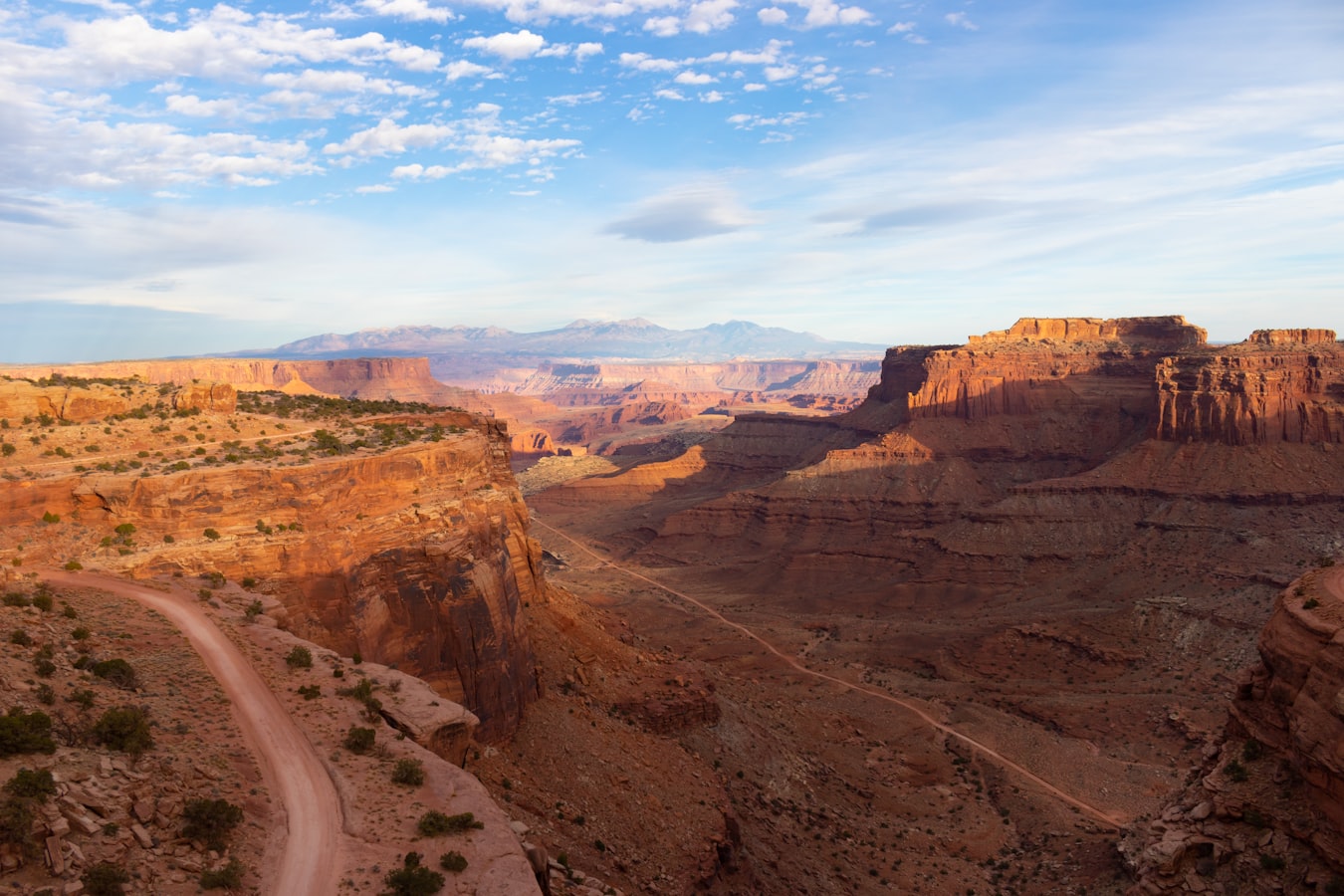
A final honorable mention to include on the best Utah national parks itinerary from Las Vegas is a quick stop at Goblin Valley State Park . Here, moving rocks coupled with erosion have left thousands of interesting sandstone shapes and rock formations all along the valley floor. These shapes resemble alien lifeforms, giving the park its name. To create the best Utah national parks 5-day itinerary from Las Vegas, choose one or two “must-do” items in each of the five national parks and a few items in between like Goblin State Park for a well-rounded experience.
The best Utah national parks itinerary from Las Vegas will take you on an adventure from the hustle and bustle of Sin City to the serenity of nature and some of the most unique scenery you may ever be surrounded with in your life. Only two states (California and Alaska) have more national parks than Utah, making it a hotspot for nature lovers and thrill seekers alike with endless options for hiking, camping, climbing, and more. With so many things to see and do, your itinerary can be customized to include a smattering of highlights, or an in-depth exploration of one or more of the treasures to be found in the almost 92,000 square miles of national parks in Utah.
The Best Utah National Park Itinerary from Las Vegas
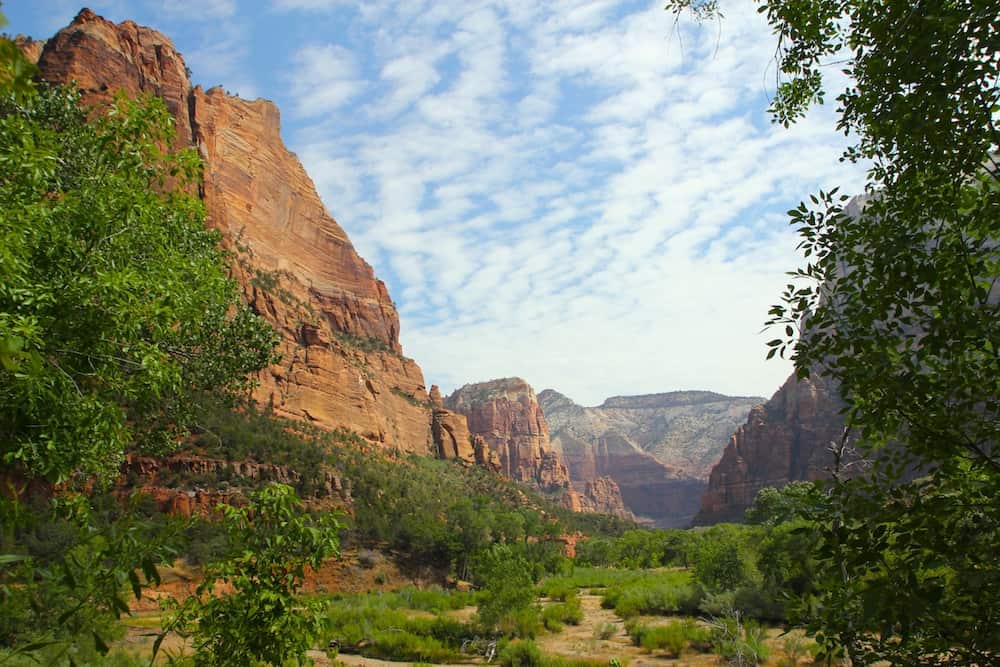
Utah is home to the Mighty Five, U.S. National Park standouts like Arches, Bryce Canyon and Zion National Parks. The best thing about Utah’s National Parks is you can road trip to each in about a week. With Las Vegas as your base, travelers can fly in and grab a rental car. It’s hard to believe that just a few hours north of the Strip, travelers can splash their feet down Zion’s legendary trail, the Narrows. Drive a few hours more, and then it’s the pink-hued spires of Bryce Canyon. Then there’s Arches and the fruit trees of Capitol Reef. Here is the Best Utah National Park Itinerary from Las Vegas.
A word about reservations: lodging and camping reservations are essential at all times of the year. Most of Utah is sparsely populated, and the towns are generally small with limited rooms. Packing food for your road trip is also a good idea, especially for lunch and snacks. Las Vegas offers the most selecion. St. George along Interstate 15 is another option.
Table of Contents
National Park Timed Entry Information
For Arches National Park, a timed entry reservation is required from April 1 to October 31 ($2). It is not available at the park, so visitors must secure one in advance. Each month’s timed entry tickets are released three months in advance, though additional tickets are released the day before.
Visitors who didn’t secure a ticket can enter the park before 7 a.m. or after 4 p.m. Arches National Park isn’t a national park that you can walk park outside the park and walk into. It doesn’t offer a shuttle system either (like Zion National Park).
Since this trip involves several national parks, an America the Beautiful annual NPS pass is a good idea. The annual pass costs $80 and can be purchased at parks or online .
Why Visit the Utah National Parks on a Road Trip
For those yearning for a road trip to see the top US National Parks, Utah is an easy yes. The Mighty 5, or Utah’s five National Parks, are each less than two hours from one another. Add the ease of flying into Las Vegas and renting a car, and a Utah National Park road trip is realistic within a week.
What I love about this trip is the diversity of the landscape in Utah. From Zion’s sandstone to Arches’ gravity-defying arches, visitors can experience a lot of wow in a week. If travelers have a few more days, they can easily add the North Rim of the Grand Canyon to this itinerary.

Utah National Park Itinerary from Las Vegas
Day 1 las vegas.
Start your Utah National Park itinerary from Las Vegas, especially if you are flying. With many flights from across the world, travelers will find a dizzying number of hotel rooms along with dining and entertainment galore. Additionally, if you can’t buy it in Vegas, it’s not made.
After arriving, I recommend packing your rental car with supplies for your road trip. Southern Utah gets a little sparse, so plan on buying road trip snacks along with basic picnic supplies.
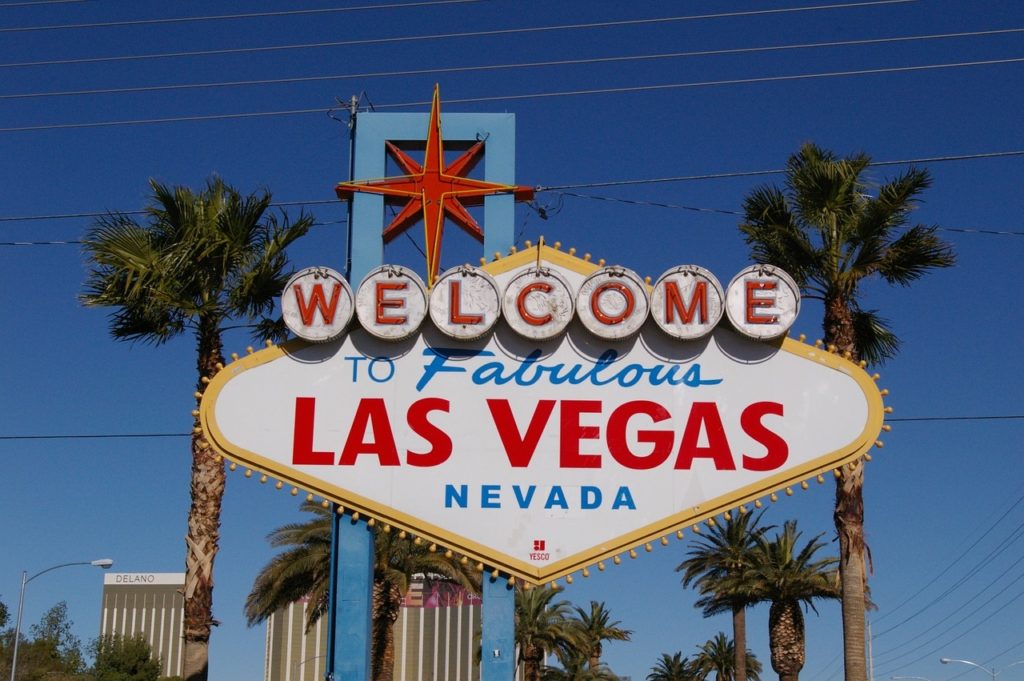
Depending on your interest, I recommend arranging a show and sampling a new restaurant in Las Vegas . Definitely walk down a portion of The Strip. Find lots of free entertainment outside of the casinos, like the Bellagio’s Dancing Waters and the Freemont Street Experience.
For the first leg of the trip, drive to Moab, Utah, to Arches National Park. It’s 450 miles (750 km) from Las Vegas and will take six or seven hours. This will be the longest day of driving, so do it on the first day and not the last day of your trip. Do yourself a favor and take Interstate 15 and Interstate 70 for the fastest drive.
National Park Passes Guide
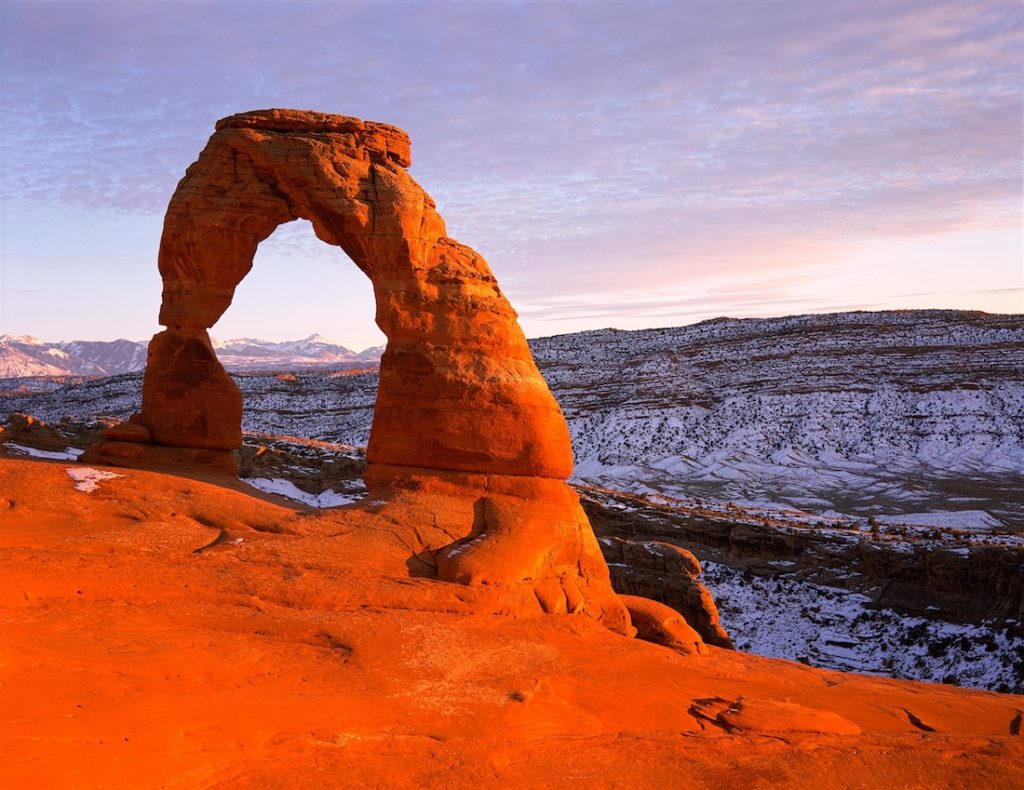
Day 2 Arches National Park
Time has carved Utah’s red rocks into at least 2,000 natural stone arches. Arches National Park is routinely considered one of the top national parks in the U.S. Though the arches are center stage, visitors will see pinnacles, fins and balance rocks.
What to do in Arches National Park
To see the best of Arches National Park, use a combination of driving and hiking, according to your ability.
Park Avenue and Courthouse Towers Area —Features high rock walls and pinnacles with an accessible viewpoint.
Balanced Rock —At 128 feet tall, it glows in the afternoon sun. Find an accessible viewpoint at this popular spot.
The Windows Section— If you are limited on time, See the North Window, Turret Arch and the Double Arch. It’s the best area to see.
Delicate Arch —The most famous arch, and it offers an accessible viewpoint. The hike to Delicate Arch is a difficult 3-mile (4.8 km) trail.
Devils Garden —Find the Landscape Arch in this area. It’s a 1.6-mile (2.5 km) easy hike.
Getting to Arches National Park
Arches National Park and Canyonlands National Park are located close together. Arches National Park is five miles north of Moab. It is open 365 days a year and 24 hours a day. A seven-day pass for Arches National Park is $30. It also requires a timed entry reservation, purchased in advance through Recreation.gov ($2).
With limited services, remember to carry enough water and food for the day. Visitor centers offer hydration stations though bottled water is not for sale in the national parks.
National Parks a Road Trip Away from LA
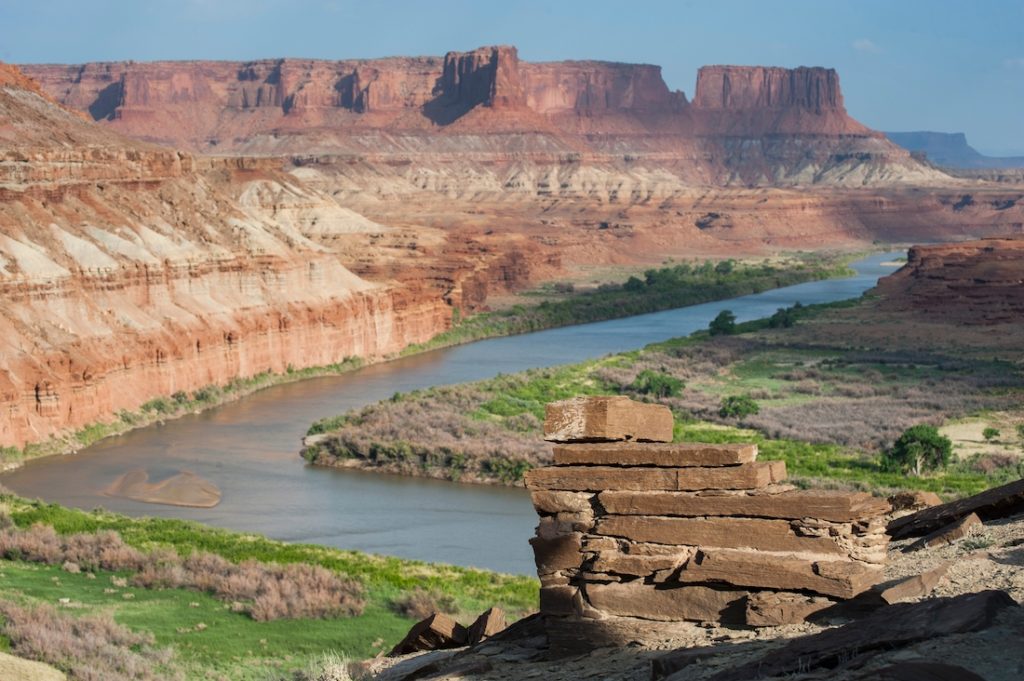
Day 3 Canyonlands National Park
You can see the buttes carved by the Colorado River and its tributaries. The park is divided into four distinct districts. The Island in the Sky district is the most accessible for first-time visitors.
What to do in Canyonlands National Park
The Island in the Sky features a visitor center and is easy to explore in a few hours. See the Utah landscape unfold from the top of 100-foot sandstone cliffs. Take the 34-mile (54 km) round-trip scenic drive to the viewpoints. For a popular photo opportunity, hike to the Mesa Arch, an easy .5-mile (.8 km) hike.
Getting to Canyonlands National Park
The Islands in the Sky entrance is 10 miles (16 km) north of Moab. Canyonlands National Park is open 365 days a year and 24 hours a day. A seven-day pass for Canyonlands National Park is $30.
Canyonlands National Park is about 115 miles (185 km) from Natural Bridges National Monument. To reach it, take Utah Route 95 and U.S. Highway 191, part of the Trail of the Ancient National Scenic Byway.
Where to Stay near Canyonlands and Arches National Parks
Since the national park sites in eastern Utah don’t offer lodging, head to Moab. There, you can find a full range of lodging, restaurants, outdoor outfitters and tours.
Summertime Guide to the North Rim of the Grand Canyon

Natural Bridges National Monument
See three natural bridges in Utah’s first national monument. With a nine-mile scenic loop drive, see the Sipapu Bridge, Kachina Bridge and Owachomo Bridge.
Where’s Natural Bridges National Monument
Natural Bridges National Monument is located in-between Canyonlands National Park andCapitol Reef National Park, east of Blanding, Utah. It’s about 115 miles (185 km) from Moab along Utah Route 95.
Natural Bridges National Monument is open 365 days a year and 24 hours a day. A seven-day Natural Bridges National Monument is $20.
Day 4 Capitol Reef National Park
Located between Canyonlands and Bryce Canyon national parks, find the Waterpocket Fold, a geologic monocline at Capital Reef National Park. It’s a wrinkle in the earth’s surface. In the 1800s, Mormon pioneers came and planted over 2,700 fruit trees.
What to do in Capitol Reef National Park
Take the Scenic Drive, a 7.9-mile (12.7 km) one-way drive to the Fruita Historic Area. Explore the original orchards, where you can pick seasonal fruit.
Find the blacksmith shop, then check out the Fruita Schoolhouse. The Gifford House Store and Museum sells freshly baked pies, bread and cinnamon rolls.
Hike the Sunset Point Trail, a .4-mile (.6 km) easy trail. Find it off Utah Route 24.
Where to stay near Capitol Reef National Park
Capitol Reef National Park doesn’t offer lodging inside the park. However, you can find 3-star lodging in the nearby town of Grover.
Getting to Capitol Reef National Park
Capitol Reef National Park is about 130 miles (209 km) from Natural Bridge National Monument. To reach it, take Utah Route 95, a Utah Scenic Byway.
Capitol Reef National Park is open 365 days a year and 24 hours a day. A seven-day Capitol Reef National Park is $20.
Day 5 Bryce Canyon National Park
See the pink spires of Bryce Canyon National Park from its canyon rim. Or take a hike down to walk among them. And don’t forget to stare at the stars if you visit near nightfall.
What to do in Bryce Canyon National Park
Hike from the Sunrise Point to Sunset Point, an easy 1.0-mile (1.6 km) hike along the edge of Bryce Canyon. The Navajo Trail offers an up-close look at Bryce’s rock formations as the trail takes hikers down into the Bryce Amphitheater slot canyon, a 1.3-mile (2 km) moderate trail.
Explore Bryce Canyon on horseback with a one-and-half-hour guided tour that takes small groups to Fairy Castle and back. A three-hour tour explores the Peek-a-Boo Loop by horseback.
Best National Parks for Fall Color

Where to Stay in Bryce Canyon National Park
Bryce Canyon Lodge is a 1925 historic lodge listed on the Register of Historic Places. It features a restaurant, a pizzeria, lodge rooms and a few suites. Western cabins offer rustic elegance, located steps from the canyon edge and the lodge.
Getting to Bryce Canyon National Park
Bryce Canyon National Park is 130 miles (209 km) from Capitol Reef National Park along Utah Route 12. It offers a free seasonal shuttle bus that departs from the visitor center every 15 minutes and stops at the lodge, the campgrounds and Sunset, Bryce, Inspiration and Sunset Points.
Bryce Canyon National Park is open 365 days a year and 24 hours a day. A seven-day pass for Bryce Canyon National Park is $35.
Bryce Canyon National Park Guide

Day 6 Zion National Park
What began as a windswept desert 180 million years ago, time slowly compressed the sand into the Navajo Sandstone that rises 2000 feet today. The sandstone dominates Zion National Park with its bold rock formations, craved by a mostly tame Virgin River. With reoccurring floods, water sculpted the canyon with the eye of an artist.
It’s a part of the Grand Staircase of southern Utah and northern Arizona. As a geologic survey, 500 million years of history can be studied in the rock layers. Grand Canyon represents the bottom layer, and Bryce Canyon National Park represents the most recent layer. Zion is sandwiched in the middle.
What to do in Zion National Park
The Lower Emerald Pool Trail offers a 1.2-mile (1.9 km) paved round-trip hike to a 100-foot waterfall right across from the Zion Lodge. Or try the Riverside Walk at the Temple of Sinawava shuttle stop. I found a wheelchair-accessible 2.2-mile (3.5 km) roundtrip trail from the Virgin River to the Narrows.
Zion National Park offers guided one-hour and three-hour horseback rides. Or take a guided scenic tour aboard a bus to see all the photo-worthy sights.
Note: The popular Angels Landing Trail requires timed entry tickets, which are available via lottery. This is for the chain section only.
Zion National Park Guide
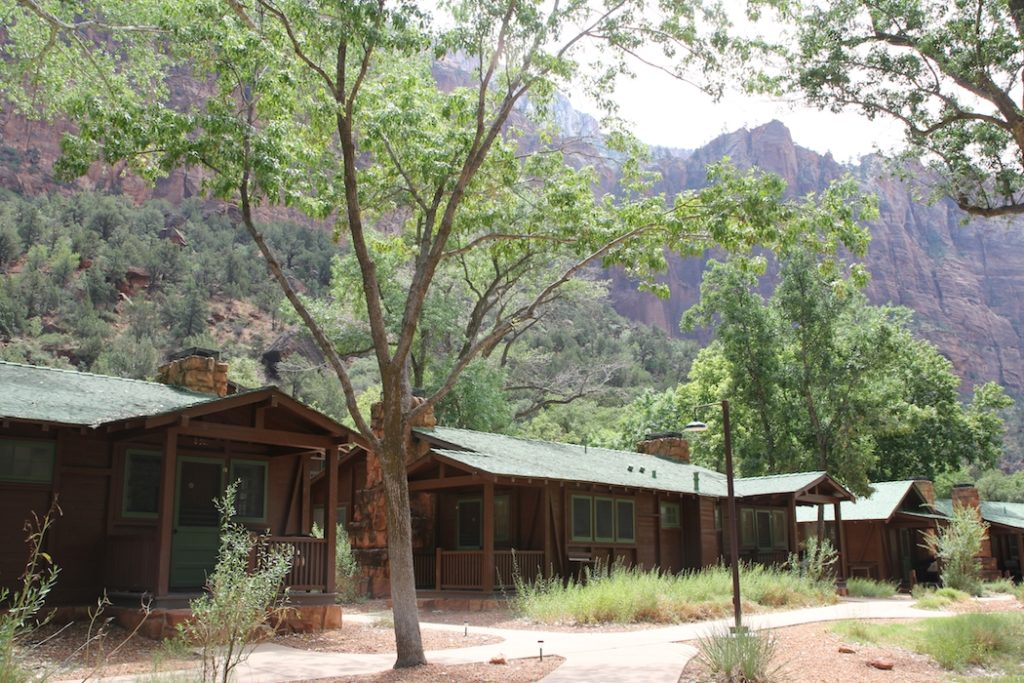
Where to Stay in Zion National Park
Inside the park, Zion Lodge offers a main building that sits on the spot of the original lodge, which burned in the 1960s. Modern hotel rooms and historic western cabins from the 1930s flank the lodge building, which houses a restaurant, a café, a coffee bar, a gift shop and an outdoor patio.
Getting to Zion National Park
Take U.S. Route 89, also known as the National Park Highway, and Utah’s Route 9, Zion National Park Scenic Byway, to get to Zion National Park.
Zion National Park is open 365 days a year and 24 hours a day. A seven-day pass for Zion National Park is $35.
Zion National Park uses shuttles to transport visitors around the park. From the nearby town of Springdale, you can find two different routes, the Zion Canyon Shuttle and the Springdale Shuttle. Parking is limited in the park, especially during the summer and popular weekends.
If a week is all you have, head back to Las Vegas. If time allows, visit the North Rim of Grand Canyon National Park.
Grand Canyon National Park Planning Guide for the South Rim
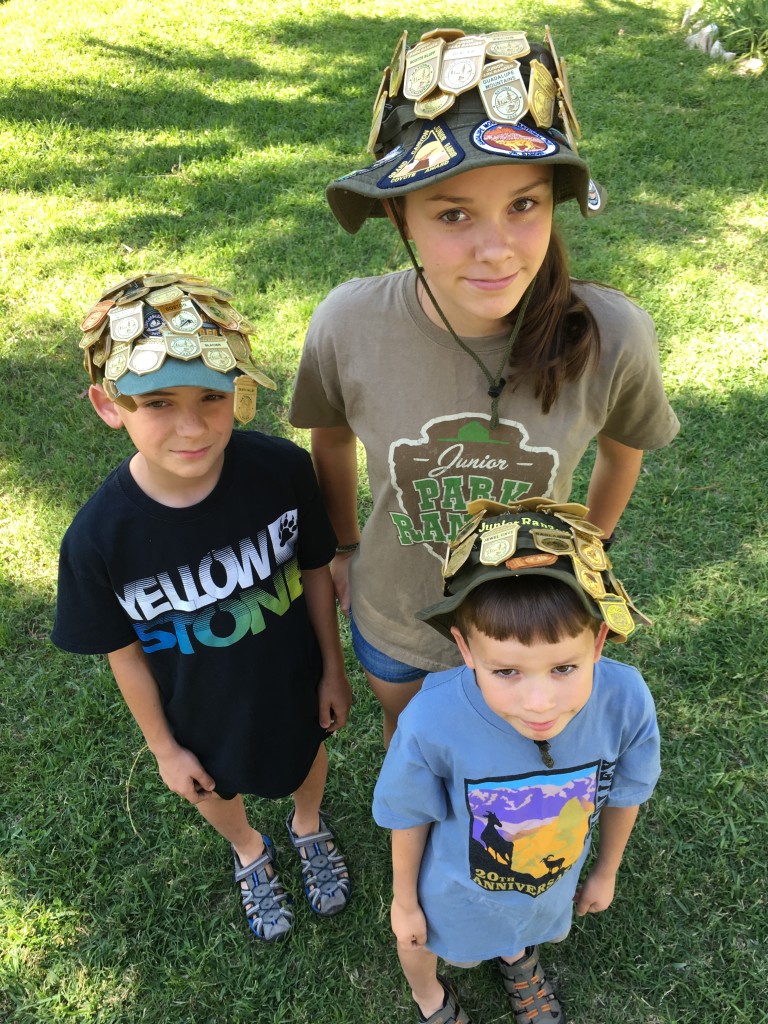
Kids in National Parks
With the Junior Ranger Program, kids can earn a free souvenir at each of Utah’s national park sites. They can also grab a booklet at the visitor center and explore the park.
After completing the required activities, turn the Junior Ranger booklet into a park ranger. After a short review of what’s important in the park, kids raise their hands and recite the Junior Ranger Oath.
Junior Ranger Guide for Badges to Earn at Home
National park road trip tips.
- Arrive early for parking at Utah’s Mighty 5.
- Purchases an America the Beautiful annual pass ($80) if visiting more than two national park sites during your trip. It’s available for all visitors and covers everyone in the vehicle.
- Wear appropriate clothing and shoes. Hats, sunglasses, long shirts, and hiking boots or sandals are necessary, even in summer.
- Pack snacks and picnic supplies for your Utah National Park Road trip.
- Carry water and water containers. Find water fountains at visitor centers and restrooms throughout the national parks.
- Carry a paper map; data service is spotty in the park and mountainous areas.
- Give wild animals at least 25 yards of space, and don’t feed them.
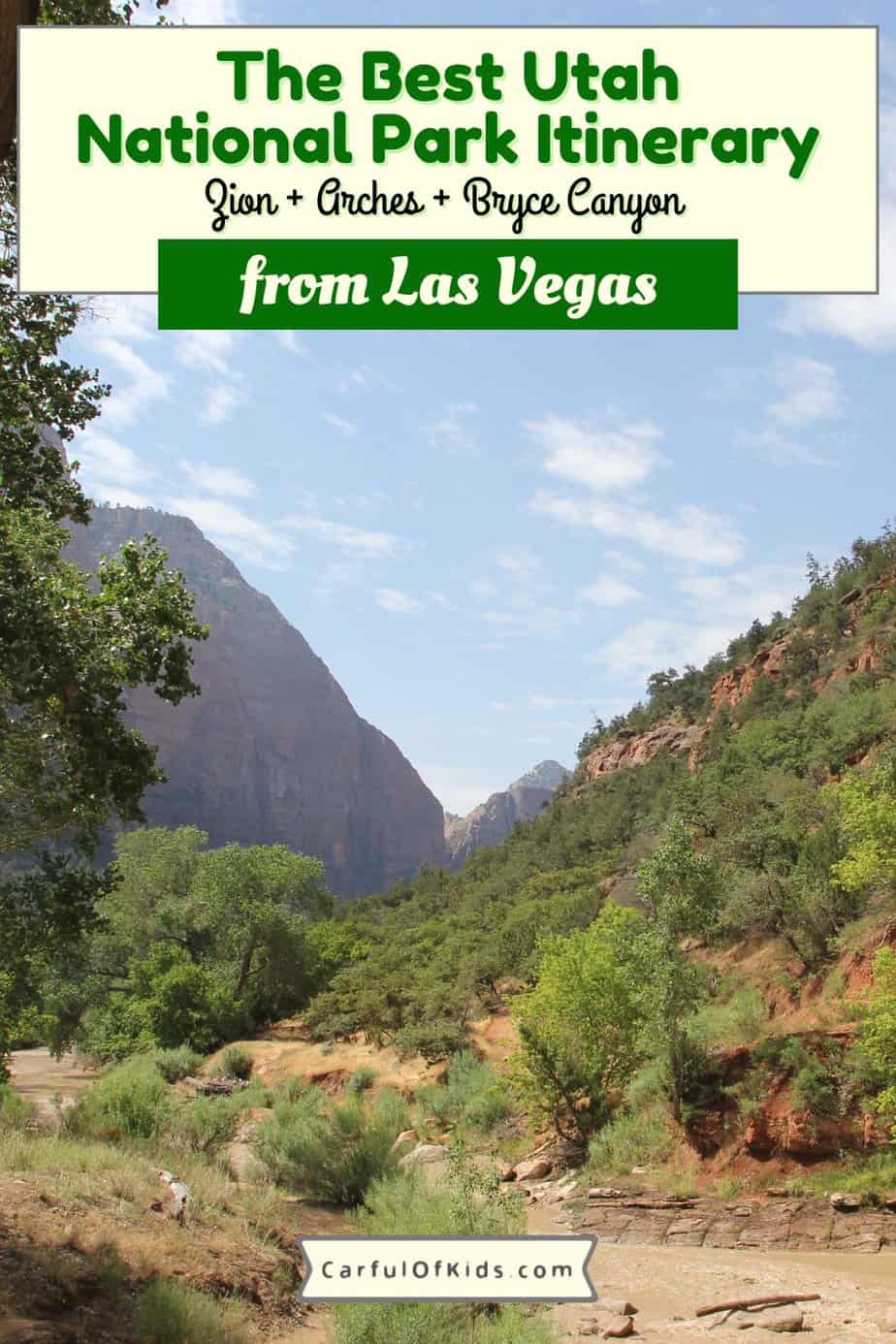
Catherine Parker has a passion for travel and seen all 50 U.S. States. As a former flight attendant with one of the largest airlines, there isn't a North American airport that she hasn't landed in at least once. Since clipping her professional wings after 9/11, she combines her love of the open road with visiting architectural and cultural icons. She is based out of Central Texas dividing her time between writing and restoring a pair of 100-year-old houses. She shares her life with her three kids and her husband.
Related Posts

From Hiking, Biking and Cave Tours: Top 11 Things to do Mammoth Cave National Park in Kentucky
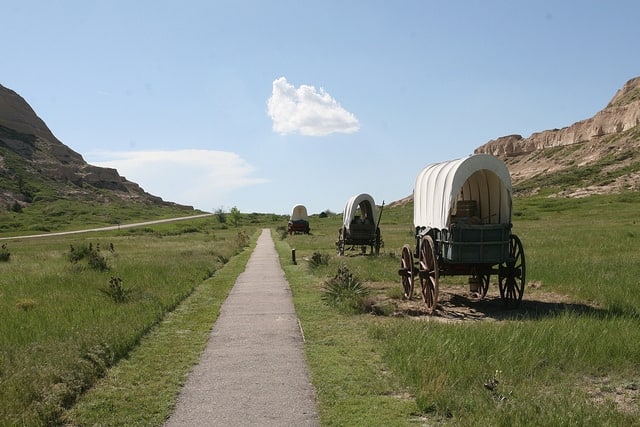
Top 6 Things to do at Scotts Bluff National Monument
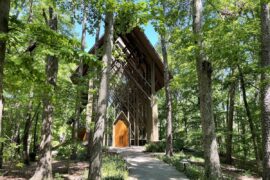
From Hots Soaks to Hot Cakes: Top 9 Things to Do in Hot Springs Arkansas with Kids
Write a comment cancel reply, privacy overview.

IMAGES
VIDEO
COMMENTS
Learn how to plan your Utah national parks road trip itinerary and visit Utah's Mighty 5: Zion, Bryce Canyon, Capitol Reef, Arches, and Canyonlands National Parks.
5-Day Utah National Parks Itinerary from Las Vegas. Day one: Drive to Moab and visit Canyonlands National Park; Day two: Arches National Park and Dead Horse State Park; Day three: Drive to Capitol Reef National Park; Day four: Bryce Canyon National Park; Day five: Zion National Park; Utah Road Trip: Las Vegas to Salt Lake City Itinerary
Here’s how we recommend spending an afternoon and evening in the park as part of your Utah National Parks road trip from Las Vegas. Scenic Drive to Bryce Point. Drive the Bryce Canyon Road from the Visitor Center to Bryce Point.
Going from west to east is generally the most popular option because Zion National Park is just a few hours from the international airport in Las Vegas. You could also start this road trip in Salt Lake City, heading for either Zion or Arches first. Where should I rent a car for a Utah road trip?
Each one offers visitors something new to see and explore, from sweeping canyons and monuments to red rocks and alpine forests, all working together to create the breath-taking landscape of the Colorado Plateau. Follow along for ideas on planning the best Utah national parks itinerary from Las Vegas!
Explore all five of Utah's national parks in six days with this road trip guide. Find tips on timed entry, lodging, snacks, hikes and more for each park.